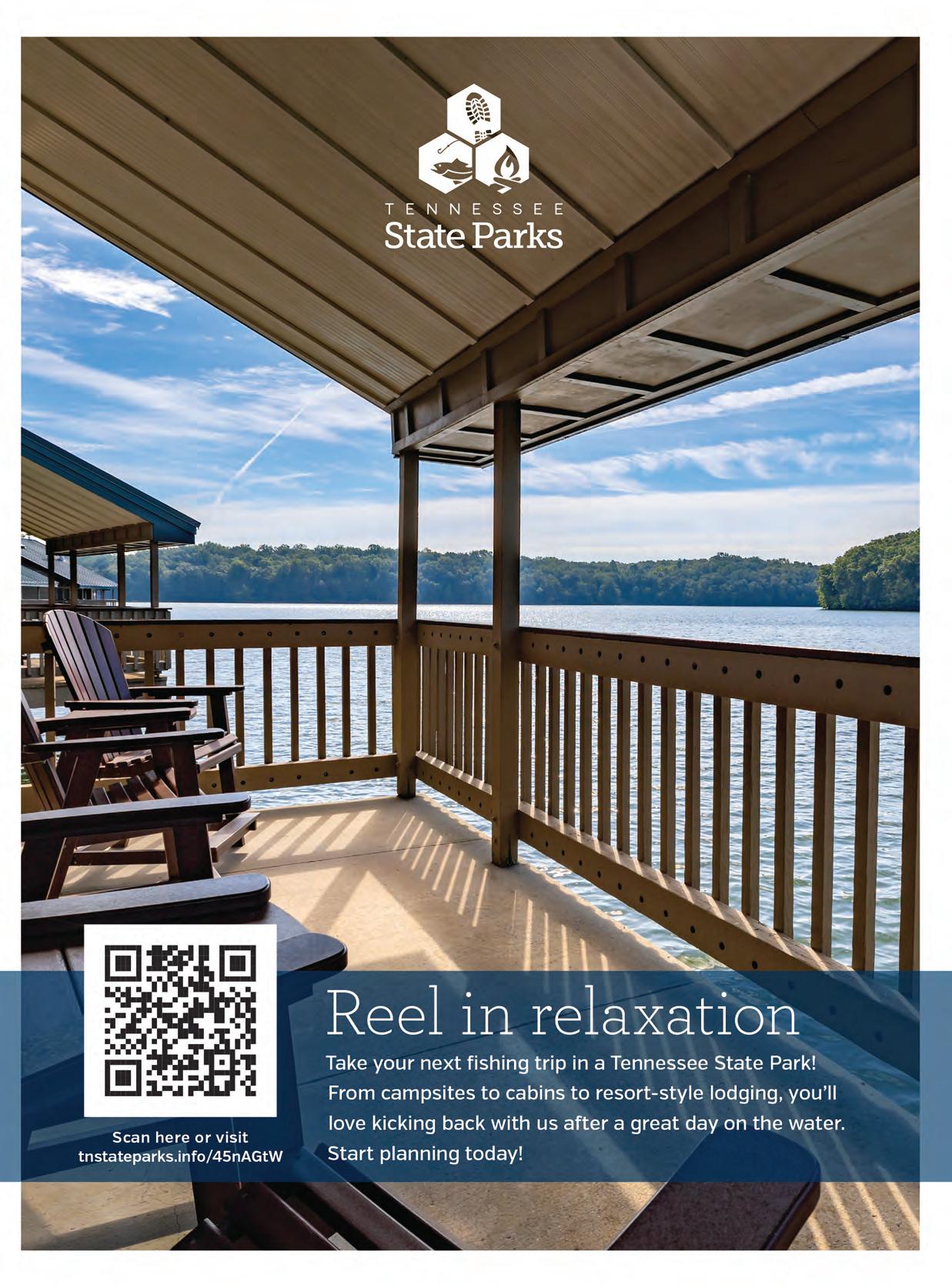




ou want new charts?
You got new charts! Explore the ocean with vibrant terrain & depth shading, using all-new TZ MAPS. Don’t just take our word for it. See for yourself. Scan here, and we’ll show you!

















ou want new charts?
You got new charts! Explore the ocean with vibrant terrain & depth shading, using all-new TZ MAPS. Don’t just take our word for it. See for yourself. Scan here, and we’ll show you!











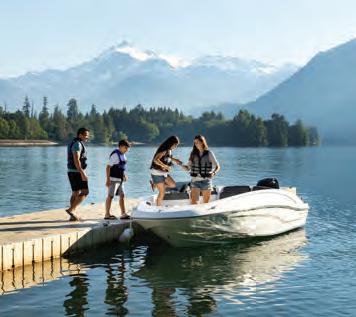






Embarking on the open water is an exhilarating experience, flled with the promise of adventure and relaxation. Whether you’re a seasoned sailor or a weekend cruiser, protecting your vessel with proper insurance is not just a choice—it’s a necessity. Explore the reasons why every boat owner should prioritize boat insurance for a worry-free voyage.
The open water can be unpredictable, with unexpected storms, collisions, or other potential accidents. Boat insurance can give you fnancial protection if there is damage to your vessel, providing coverage for repairs or replacement.
Accidents on the water can result in damage to other boats, docks, or even injuries to passengers. Boat insurance offers liability coverage, which can pay for damages or injuries you’re liable for while boating, up to specifed limits, and lawsuit costs if you’re sued. This includes damage you cause to another watercraft or if someone on or near your boat is injured and you’re found to be legally responsible.
Unfortunately, boat theft and vandalism are realities that boat owners face. Boat insurance has comprehensive and collision coverage that can protect you against events outside of your control, including theft and vandalism.
Accidents on the water may lead to injuries for you or your passengers. Boat insurance offers a range of optional medical payments coverage limits, helping to cover medical expenses if you are in an accident or someone is hurt on your boat, regardless of fault.
If you fnanced the purchase of your boat, most lenders require insurance coverage to protect their investment. Having boat insurance not only fulflls these requirements but also gives you peace of mind knowing that your fnancial interests are safeguarded.


Some water municipalities and marinas may require proof of insurance for docking or accessing certain areas. Boat insurance allows you the fexibility to explore different destinations without worrying about entry restrictions.
Emergency towing and assistance
Progressive boat insurance can include optional Sign & Glide® On-Water Towing coverage. If your boat is disabled or breaks down on the water, Sign & Glide® pays for on-water towing, jump starts, soft un-groundings, and fuel delivery.
Wreckage removal
If your boat sinks, Progressive boat insurance will cover the cost of removing your boat from the water (if removal is legally required).
Investing in boat insurance is not just about protecting a valuable asset; it’s about safeguarding the memories, experiences, and joy that come with your on-water adventures. Don’t let unforeseen circumstances disrupt your journey—navigate with confdence, knowing that Progressive boat insurance has you covered. Ensure a smooth and worry-free voyage, because when it comes to your boat, peace of mind is the ultimate luxury.
Scan to get a quote in as little as 4 minutes
learn more.




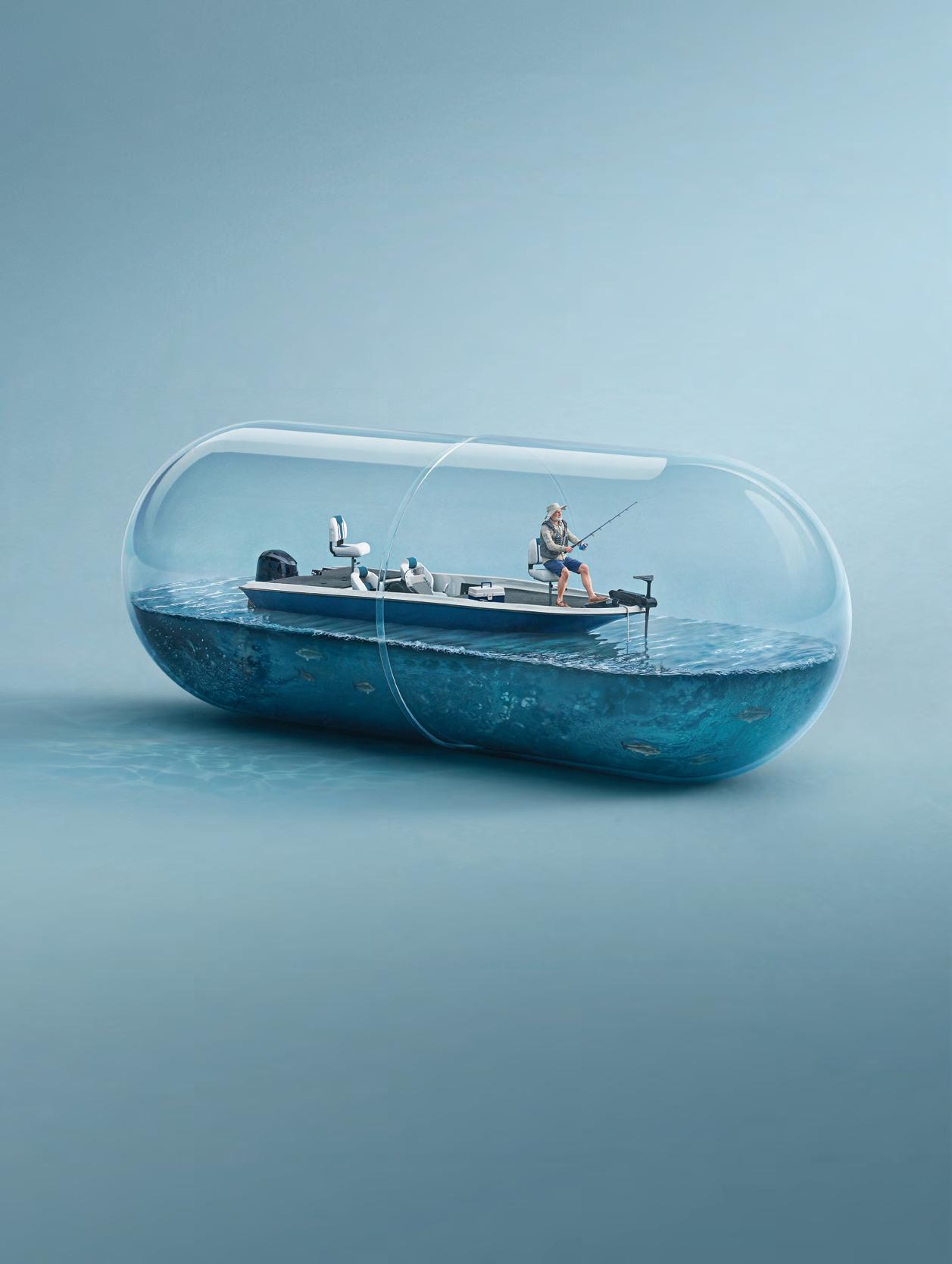
















THATCH MAGUIRE, EDITOR AT LARGE
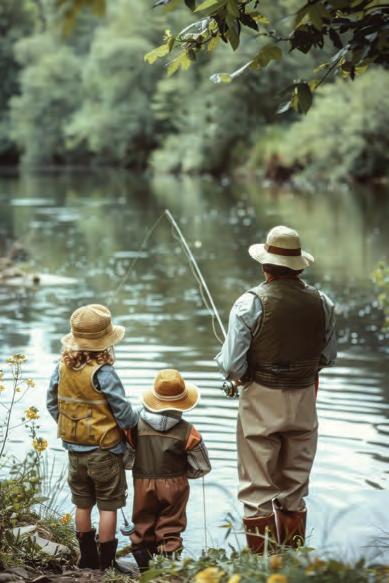
Father’s Day is one of the best opportunities to take your kid !shing.
It’s a celebration of the powerful bond forged when dads pass down the timehonored tradition of !shing, a tradition that stretches back thousands of years. While !shing once put food on the table out of necessity, today it still feeds something deep within us. at ancient connection to the water lives on in every angler, whether they realize it or not.
Inviting your son or daughter to !sh on Father’s Day regardless of their age makes a timeless statement. It bridges distance, mends di erences, and rea rms love in a way few other gestures can. Even if the day ends without a single bite, the act of !shing together creates a bond that words can’t express. It’s not about the catch. It’s about the connection.
ere are countless lessons a father might teach a child, but carving out time to share a quiet day on the water—free from the noise and distractions of modern life is one of the most meaningful. By saying, “Let’s !sh together today,” you’re also saying, “Let me share who I am with you.” And that’s a gi no one forgets.
Don’t have a son or daughter? No problem. Take any kid !shing this Father’s Day. Whether it’s a neighbor, a niece or nephew, or a friend’s child, the impact is the same. You’re passing on something real, something rooted in tradition, and something that could change a young life forever.
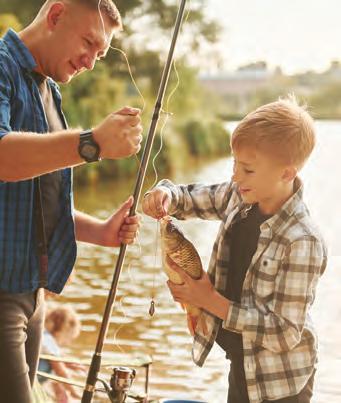
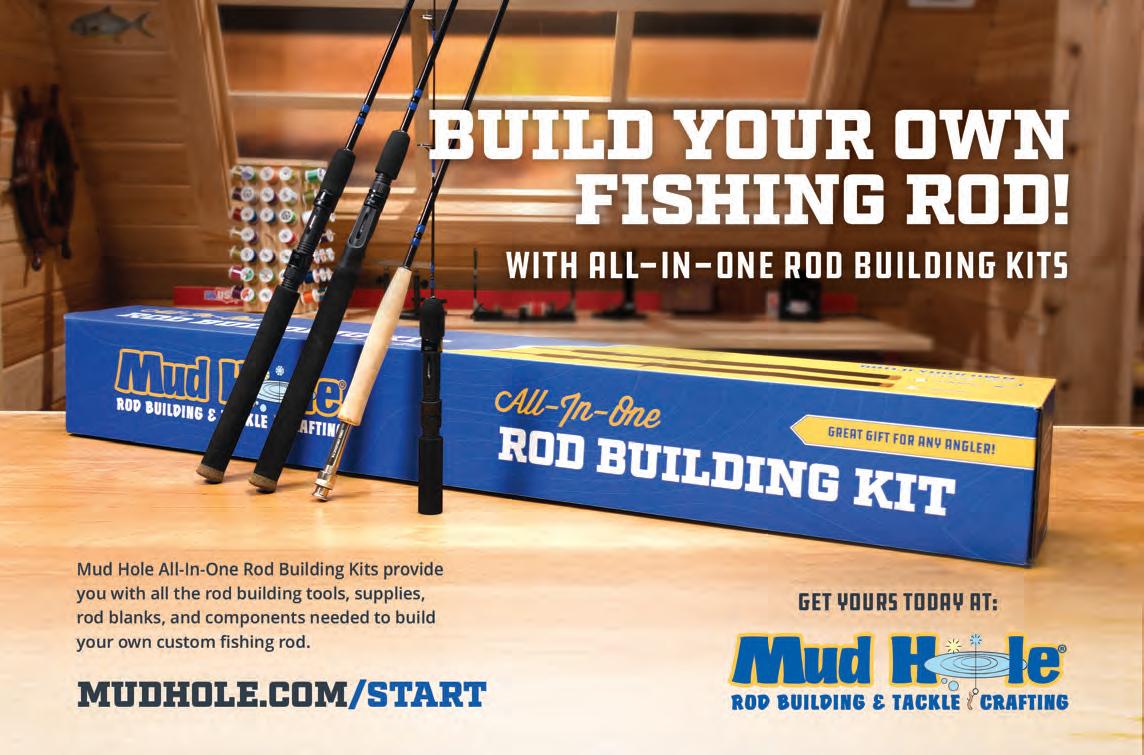

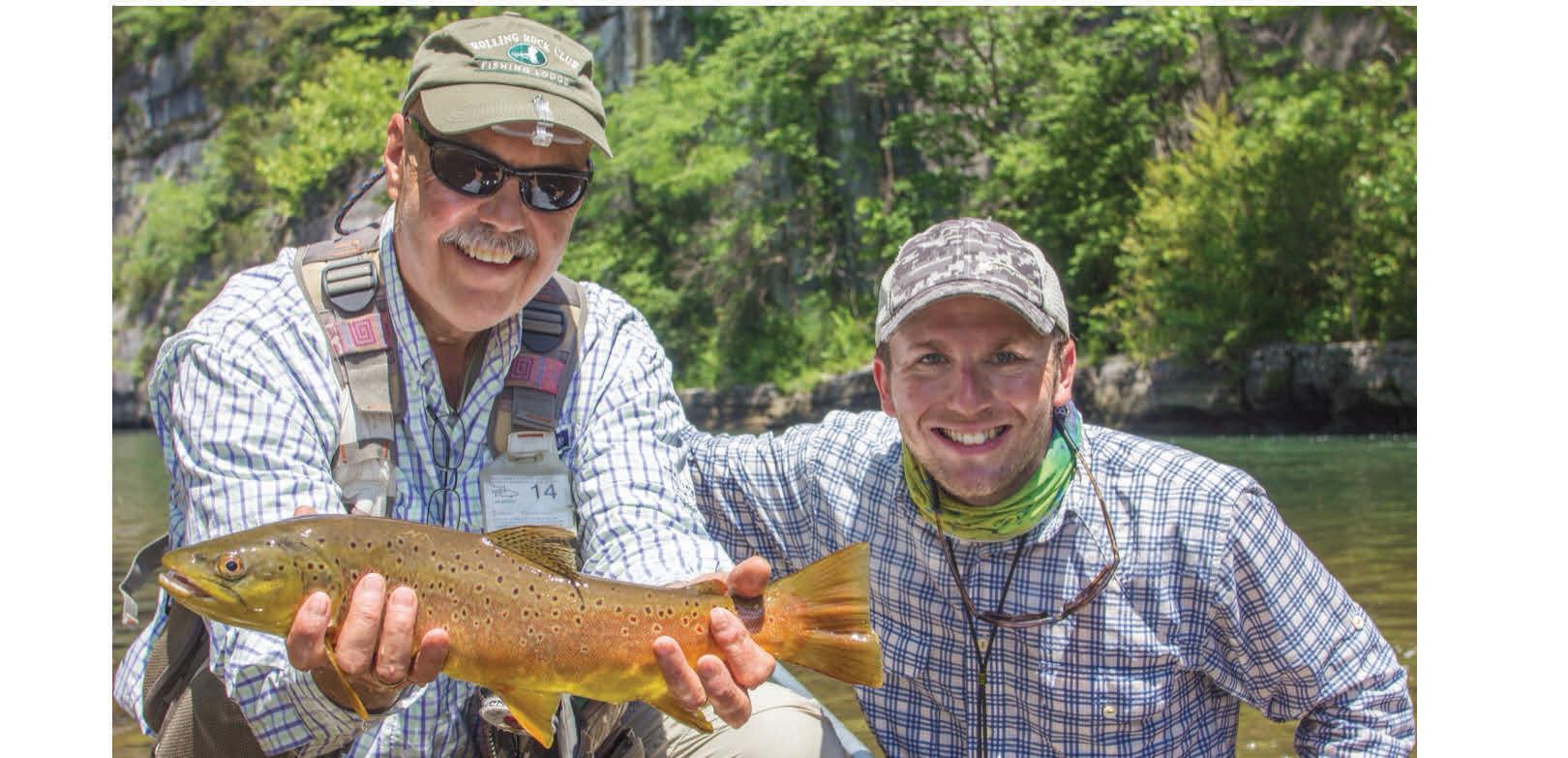






By Capt. Steve ompson
Targeting king!sh during their annual migration season o Florida’s east coast is a predictable event that coincides with the annual migration patterns of the Atlantic stock of king!sh. During the summer, anytime from midMay through August, when the water is warm enough for the kings to stick around, we all have a great chance of catching a tournament class king!sh, at almost anyplace we decide to !sh.
King!sh can be caught anywhere from the mouth of an inlet, on out to 200 foot depths, and that means that almost any seaworthy vessel can, and does, go a er these !sh during the “mostly calm” summer days.
Everyone has heard about the GJKT tournament winner that Fred Morrow caught at the tips of the north rocks, or Bob Johnson on his Traveler who won the aggregate, with two nice !sh, also right o the beach. What do these teams have in common? ey won in small boats with very little overhead, with very short runs to their !shing grounds. But they did their homework and had a plan, and went straight to where they were going to !sh. Because let’s face it, the small boater isn’t going to run all over the ocean chasing !sh that have already been caught. And those are not the only examples, this same scenario takes place every year
in tournaments up and down the Atlantic coast.
Another way to !sh on a budget is to not get caught up in the latest and greatest gear. Sure, you need quality equipment, but one can good used reels from friends, who are upgrading, or from yard sales or even at swap meets at your local o shore club.

As far as rods go, if you know what “feel” you like on your rods, you can !nd o name rods at sidewalk tent sales at your local tackle store, that perform as well as a custom rod, for a fraction of the cost!
To avoid buying that expensive bait, become pro!cient with a cast net! Kings get fat and happy on a steady diet of “pogies”, or menhaden found along our beaches. You need a heavy fast sinking net to have all the bait you want for a day’s !shing. No pogies, you say? Don’t worry, many king!sh over the years, have fallen to other baits than just a pogy. A pound of shrimp on tournament day could very well be a day saver. Croakers are great king baits, as well as blue runners and blue!sh. Ribbon!sh can also be used but are best caught a few days before and brined so they are easily trolled. If you like !shing the Party Grounds always have some sabikis on board. ese are small feathers on small hooks on a special rig that will catch fresh sardines and cigar minnows on most of the o shore reefs and wrecks.
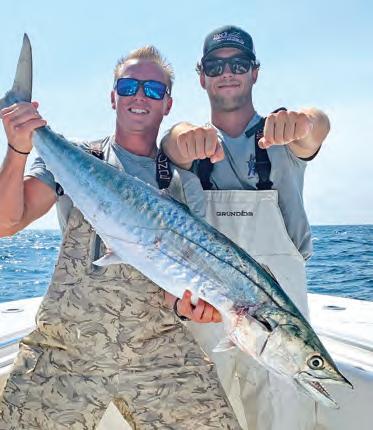
Don’t be intimidated when you sign up to !sh any tournament. You have the same chance to catch a tournament winning king!sh as the next guy. And you do not have to drop big bucks to do so. Just do your homework, pre-!sh as much as possible and, come tournament day, have a plan and stick to it…and we’ll see you at the weigh scales!
Capt. Steve ompson is Chairman of Jacksonville Marine Charities / Greater Jacksonville King sh Tournament and a 40-year successful veteran of competitive king sh tournaments all over the Southeast. Contact him at (904) 251-3011 or email: gjkt@king shtournament.com.
Whether you’re chasing trophy fish or charting your next offshore course, your time on the water deserves the best in navigation and marine technology. Defender brings you UNBEATABLE PRICES and EXPERT SUPPORT on Lowrance and Simrad electronics—trusted by professionals and weekend warriors alike.

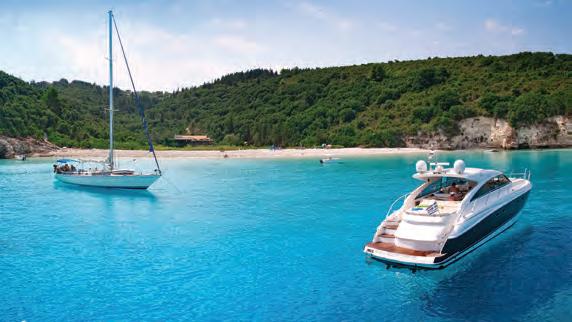
The choice for powerboaters and sportfishers. Get crystal-clear sonar, radar, and navigation that keeps you locked on target.

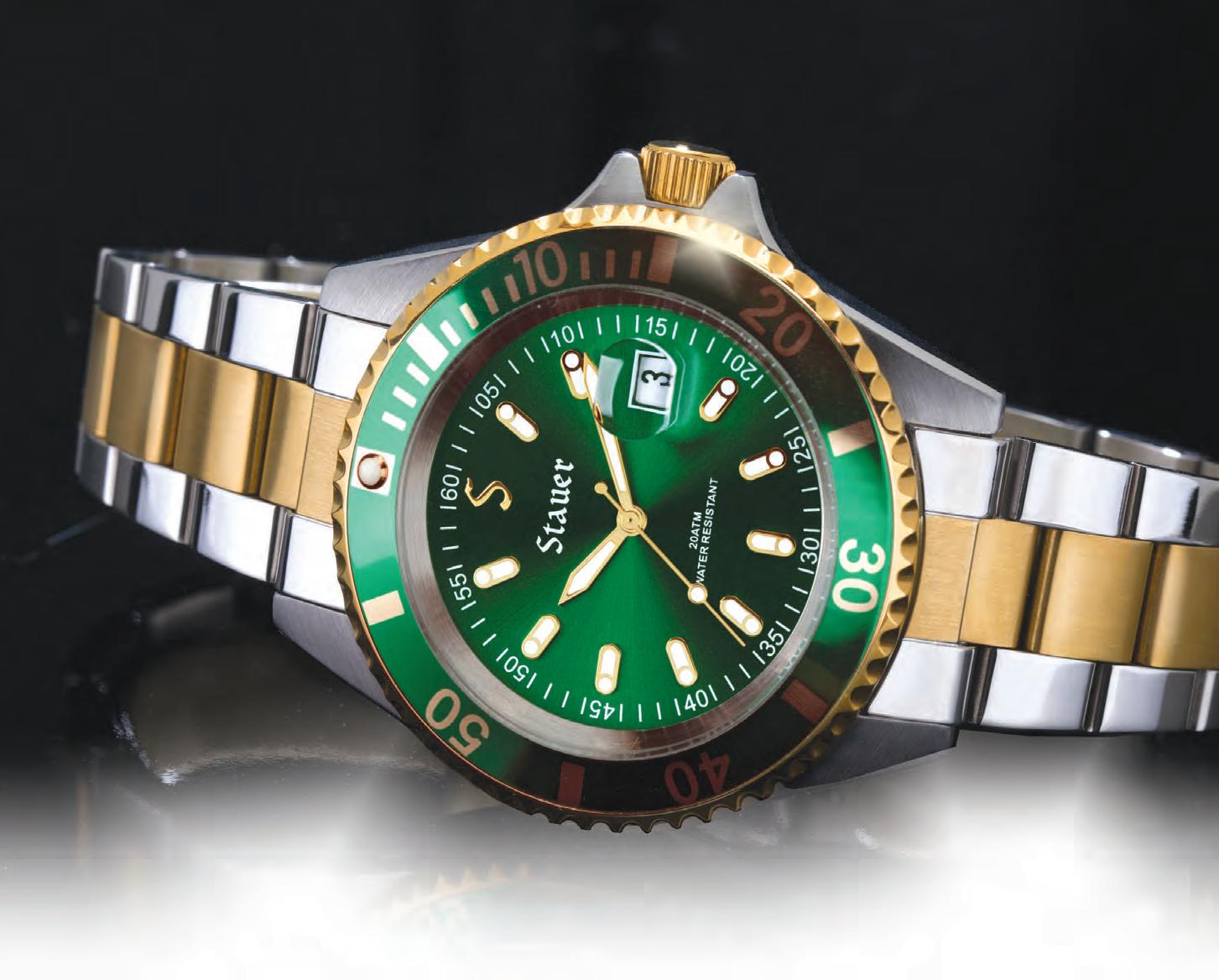
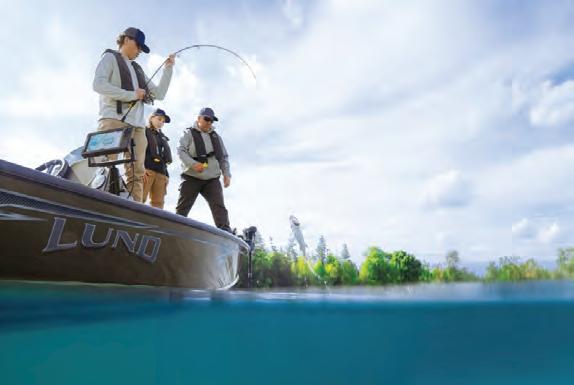




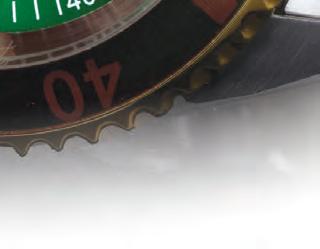
–– George Thomas, Noted watchmaker & historian



Every year in Basel, Switzerland, the world’s best-known luxury watchmakers gather to display their new timepieces. It’s a great event for spotting timepieces that standout–– in performance and in personality. We saw one impossible to ignore: a precision dive watch with an arresting green dial. But we also saw the five-figure price tag and knew we could bring our customers that exact same precision and stand out appeal for a whole lot less. The Stauer Evergreen Diver is that timepiece.
Built like a submersible battleship with a stainless steel case, caseback, and band, the Evergreen Diver is water-resistant down to 660 feet or 20 atmospheres, a feat facilitated by a hardened crystal and screw-down crown.
Green On Your Wrist AND In Your Pocket. You could pay an awful lot elsewhere for this verdant virtuoso, but the majority of the cost is in the big designer name upcharge. We think those guys are all wet. This is how you own a top-of-the-line dive watch without helping pay for some marketing guy’s yacht.


Satisfaction Guaranteed or Your Money Back. Wear the Evergreen Diver for 30 days. If you’re not completely happy, send it back for a full refund of the item price.
Limited Reserve. A watch of this caliber, with a price that won’t drag you under, takes 6 months to create and won’t stick around for long. Call today!


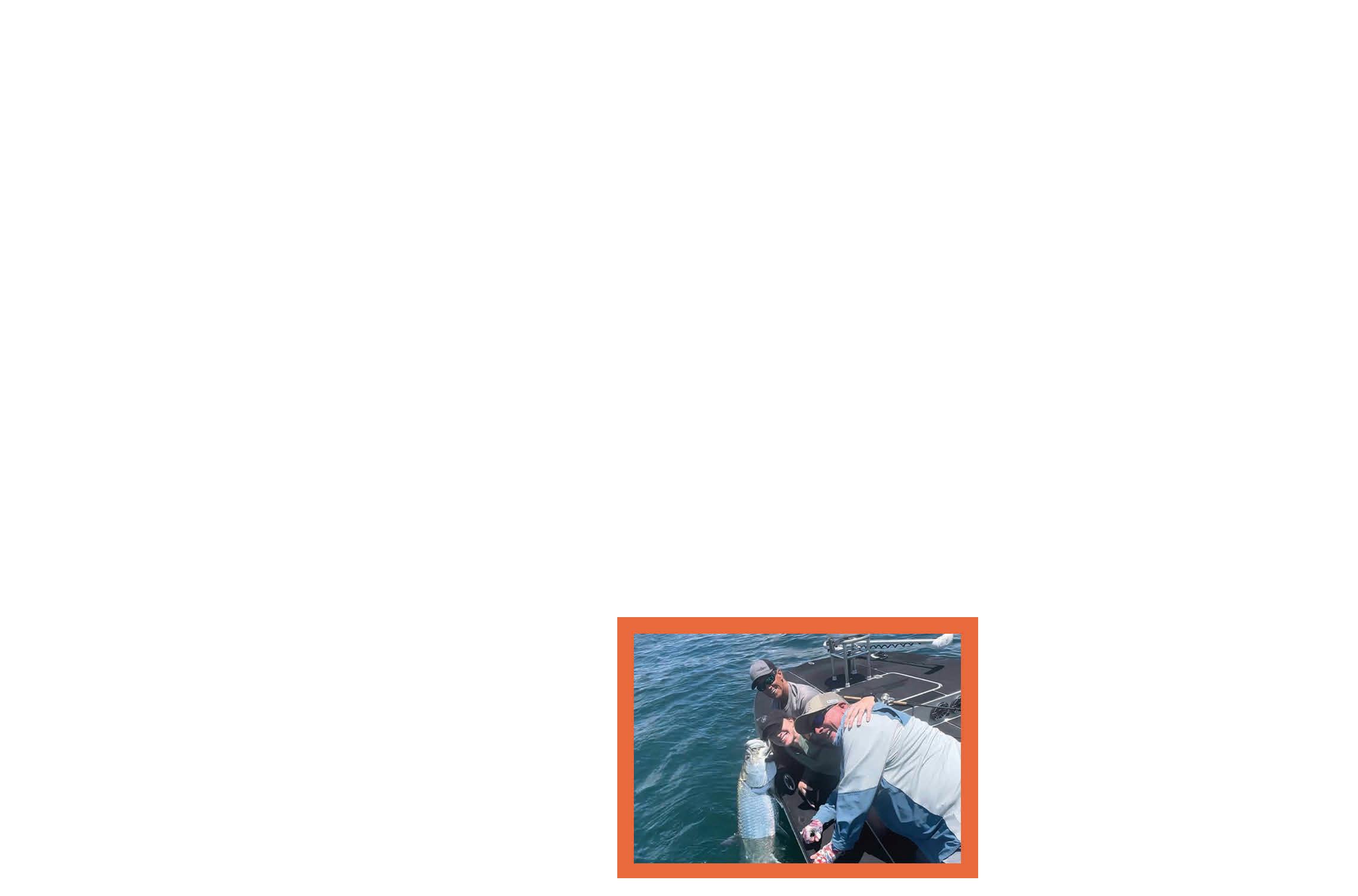
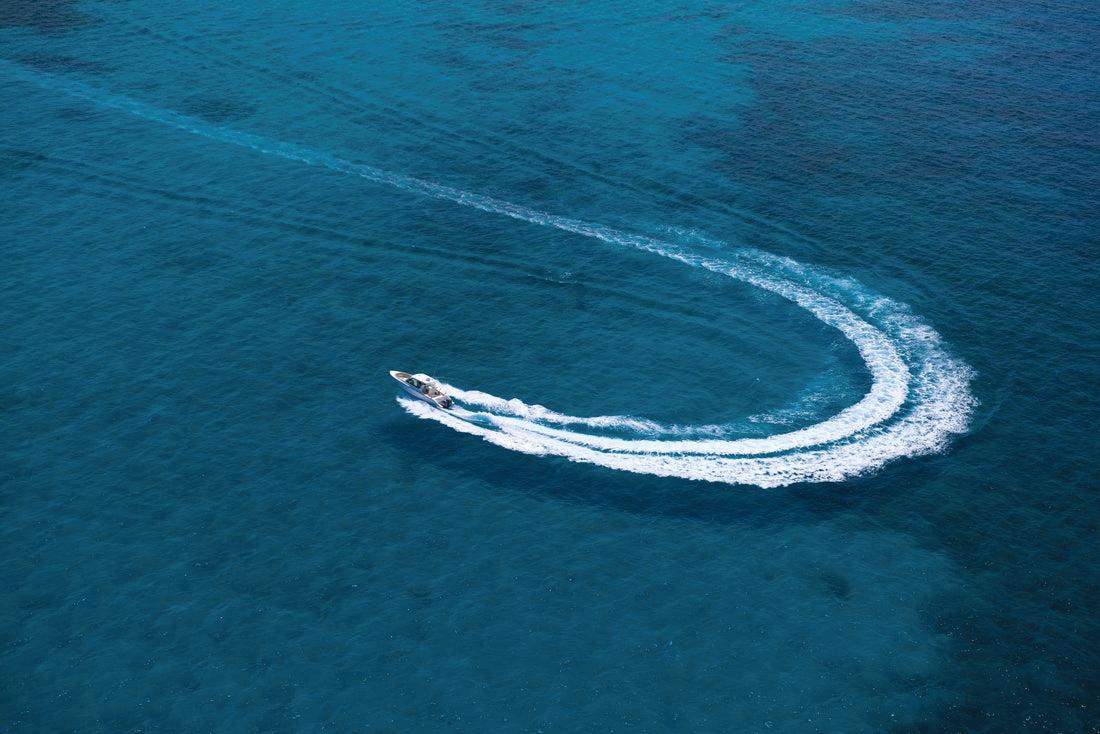
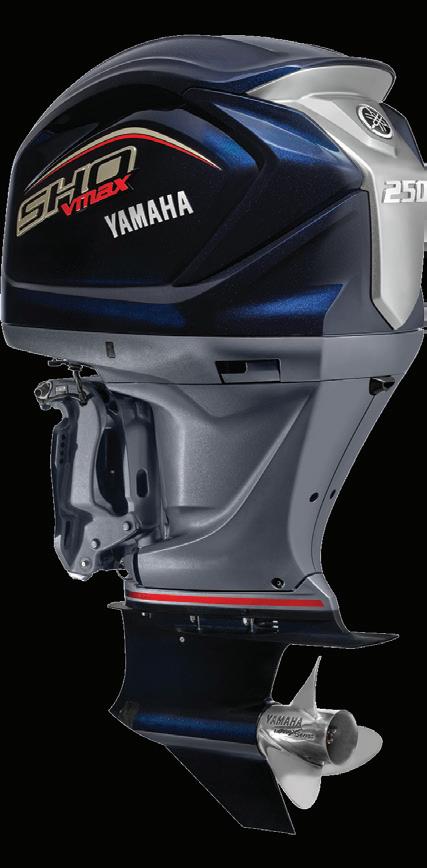
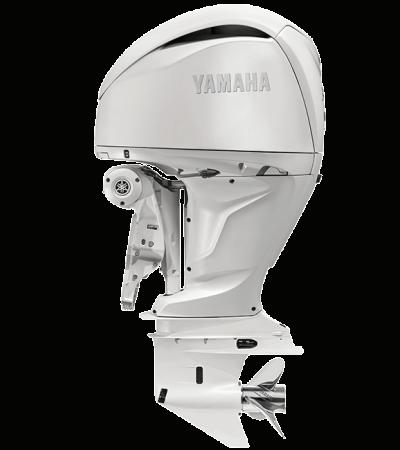

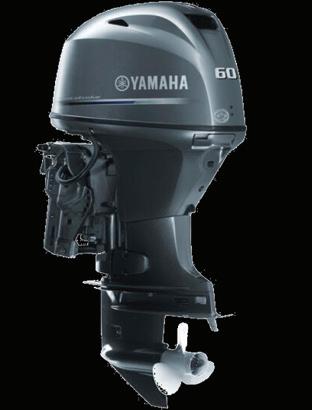
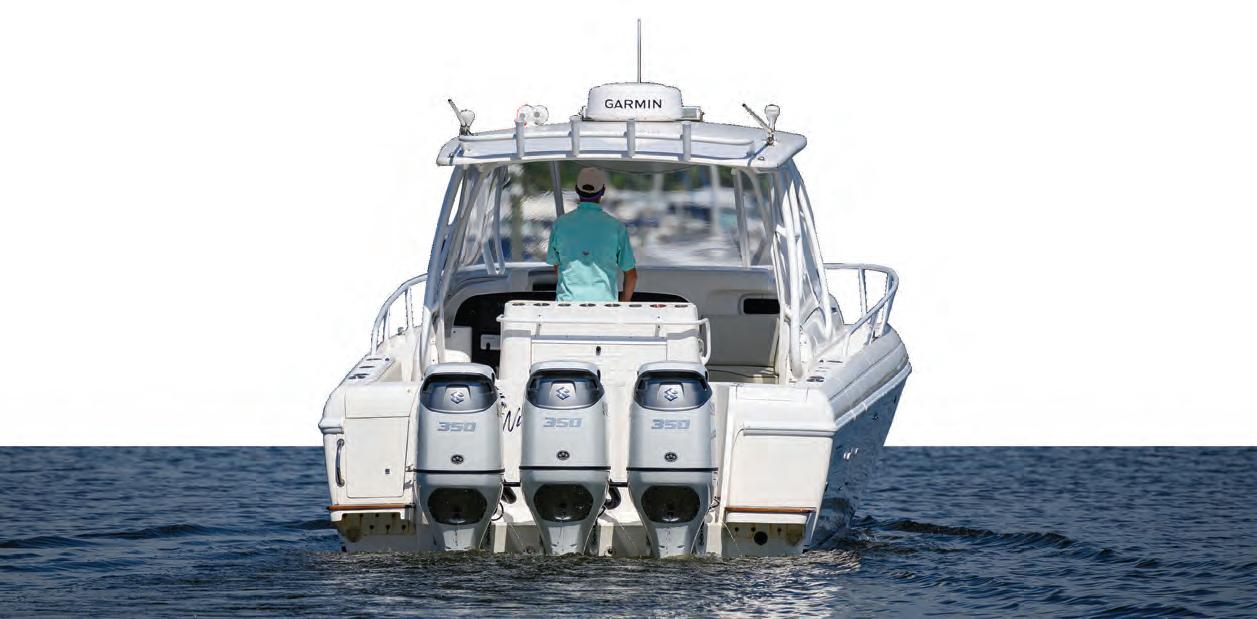









It’s no fsh tale when you run with a John Deere. You can get everything done faster and easier, so you get more time on the water. Plus, our special offers make them the catch of the day.





Arecord-breaking 126-day Gulf red snapper recreational season has been set for 2025, the longest season since Florida assumed management of Gulf red snapper. e expanded season includes additional summer and fall shing days from 2024, o ering anglers more opportunities to sh over major holidays such as Memorial Day, Independence Day, Veterans Day, and anksgiving.
“Florida is the shing capital of the world— with 4 million licensed anglers and generations of families who enjoy our waters. A er setting a record last year, we’re doing it again with the longest Gulf red snapper season in state history, giving Floridians and visitors even more time to
sh on Florida’s waterways, said Governor Ron DeSantis.
“ e Gulf recreational red snapper season is a highly anticipated and celebrated event for anglers nationwide, emphasizing Florida’s exemplary shing resources,” noted Florida Fish and Wildlife Conservation Commission Executive Director Roger Young. “ is record-long season results from the strong data collected through the State Reef Fish Survey, which Governor DeSantis, the Florida Legislature, and our recreational anglers have consistently supported.”
e 2025 Gulf red snapper season is open to those shing from private recreational vessels or charter vessels. e summer season began over

Memorial Day Weekend, and reopens June 1 through July 31. e fall season will include the following dates:
• September 1 –14
• September 19 – 21
• September 26 – 28
• October 3 –5
• October 10 – 12
• October 17 – 19
• October 24 – 26
• October 31 – November 2
• November 7 – 9, 11 (Veterans Day)
• November 14 – 16,
• November 21 – 23
• November 27–30 ( anksgiving weekend)
• December 5 – 7
• December 12 –14
• December 19 – 21
• December 25 – 28 (Christmas weekend)
Florida’s ability to o er this extended season is made possible by the data-driven management approach of the Florida’s State Reef Fish Survey (SRFS).
In the event of weather-related closures impacting the shing days, Florida will evaluate the option to add additional Gulf red snapper dates later in the year.
Anyone shing for red snapper from a private recreational vessel—in state or federal waters— must be registered as a State Reef Fish Angler (with annual renewal), even if exempt from shing license requirements. Registration is available at GoOutdoorsFlorida.com.
For more on recreational snapper regulations, visit MyFWC.com/Marine.


What are the best parts of June? School’s out, the days are long, and I get to hit the water more o en with my boys. It’s become a tradition in our family: pack the cooler, grab the rods, and head out chasing tails under the summer sun. Our not-so-secret weapon? e always-reliable popping cork.
Now, I won’t try to name every cork on the market (we’d be here till next June), but I’ll share our go-to setup and a few tips to help make your next trip smoother—especially if you’ve got little anglers in tow.
Let’s talk bait. Live shrimp is our MVP, but dead bait and lures get their time to shine too. Lures tend to keep the “bait bandits” away, but if it’s a slow bite, those pesky nibblers become the stars of the show. My kids think a croaker on the line is just as thrilling as a red sh.
We o en dri or anchor near structure when there’s bait ickering around. Dri ing can be tricky with kids who haven’t mastered the long cast or slack control. Two tricks help here. First: the circle hook. It sets itself (less work for little hands) and does minimal damage if you need to release your catch. Plus, in the chaos of a dri ing boat, it’s more forgiving when someone forgets to keep tension on the line.
Second: skip the loop knot for your cork and
hook. Loop knots are excellent—just not here. ey add slack where you don’t need it, and with junior anglers on deck, less slack means fewer tangles and missed sh.
Now to the main event: the cork itself. A er decades of experimenting, I’ve fallen for a newer model—a hard plastic, deep-cup, rattling, popping cork. It’s heavy enough for my boys to cast like champs, even into a headwind. No wires, no wind tangle nightmares, and it ies like a bullet. e built-in rattles add the right commotion to call sh in without scaring them o . And that deep cup? It creates that irresistible slurp-splash sound with almost no e ort. Perfect for young anglers still guring out the rhythm.
One last tip—transport like a pro. Most folks clip the hook low and let the cork bounce up top, opping around and waiting to poke someone. I reverse it: secure the cork down by the reel, wrap the leader around the handle, and clip the hook up high. No ex, no loose hooks, no surprise piercings.
So grab a few snacks, load up the boat, and hit the water. June’s waiting—and the popping cork’s ready to work its magic.
Capt. Michael Okruhlik is the inventor of Knockin Tail Lures®, and the owner of www.MyCoastOutdoors.com.
By Capt. Michael Okruhlik
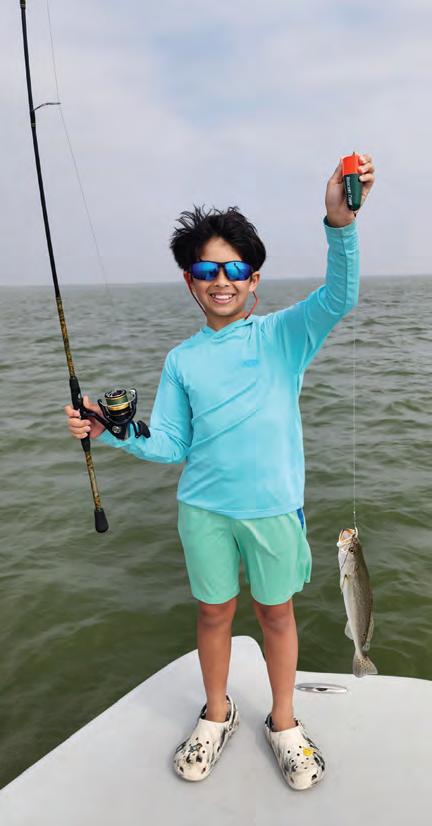
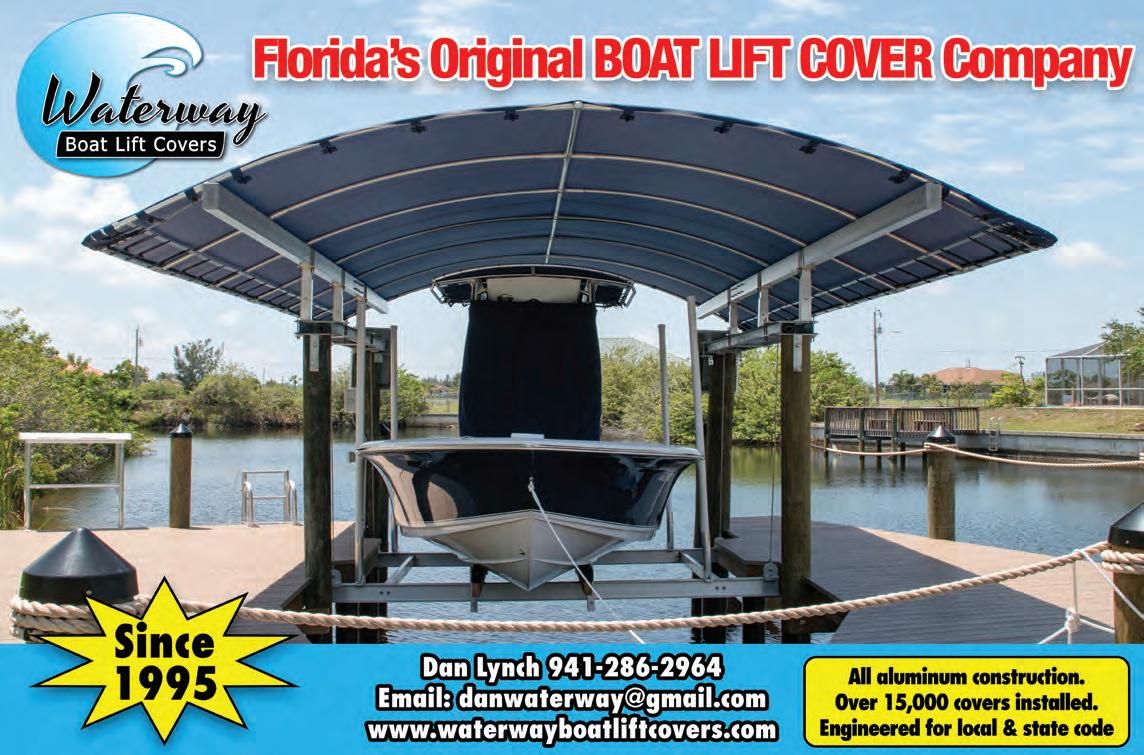




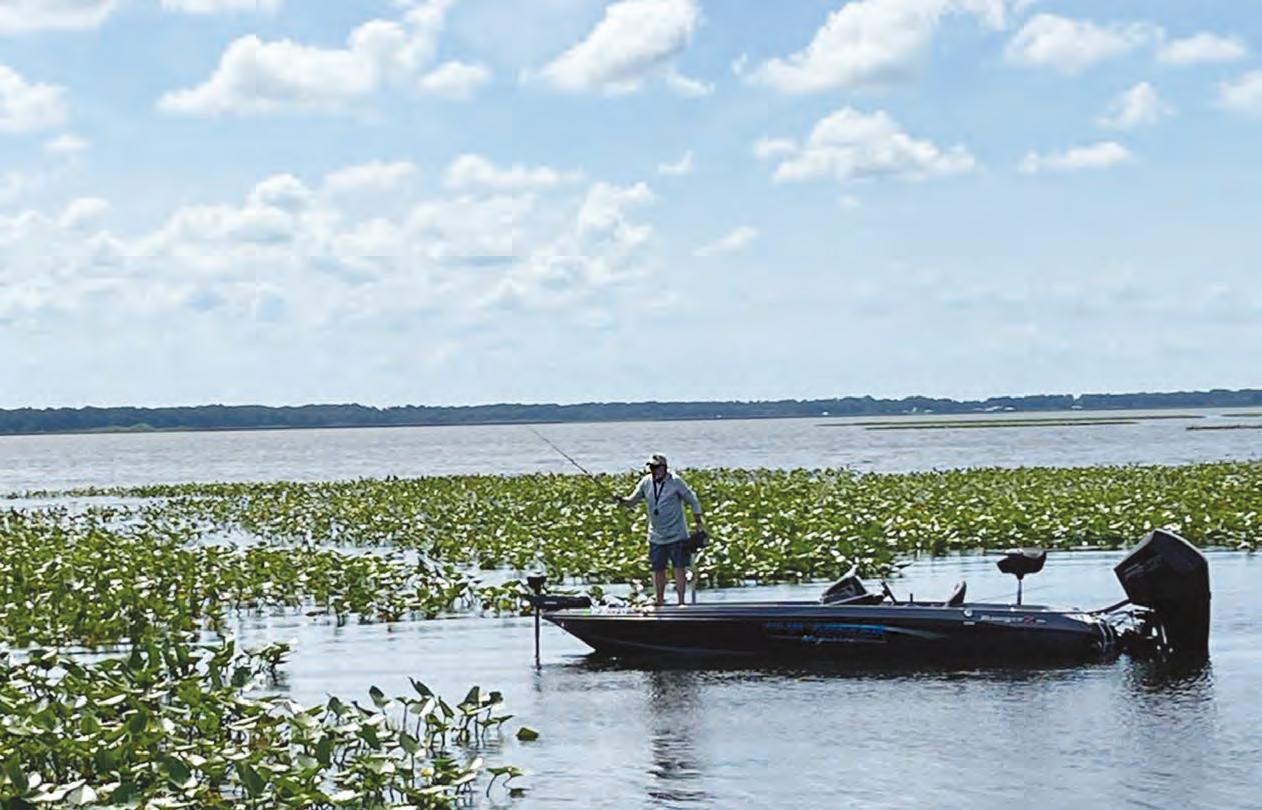
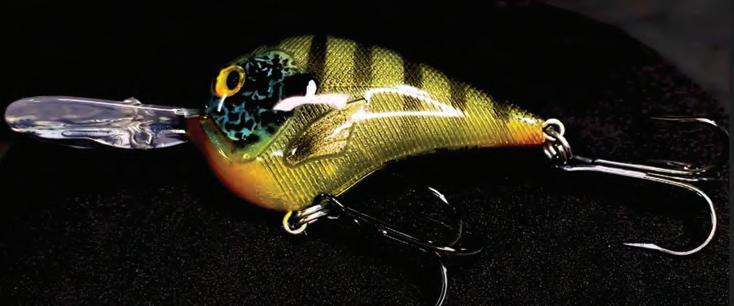
By Don Norton
The water temperature is in the high 70s or 80s in May, which means many fish are chasing bait, most of which is shad.
The big groups or balls of bait will be all over your depth finder. Most of the time, they stay offs a fun time to go fishing!
If you are an angler, there are many hobbies associated with fishing, including rod building and repair, tying flies, pouring jigs and plastic worms, building spinnerbaits and buzz baits, and hand-carving lures out of wood.
I’ve done them all, and a couple of years ago, I found another hobby that interested me—airbrushing fishing lures.
I’ve always enjoyed painting. My original major in college was Fine and Professional Arts. But I never really pursued the hobby outside of a few paintings and drawings.
But airbrushing is different.
My first exposure to artwork done with an airbrush was way back in the 1970s, when a friend of mine had the cowling of his outboard motor painted with a leaping bass and his name. It looked fantastic, and I couldn’t believe the detail. Years later, I remember seeing several Harleys with airbrushed gas tanks depicting skulls and flames.
I purchased an airbrush 10 or 15 years ago, along with some paint and an air pump. I remember the airbrush getting plugged up, and at the time, I didn’t really understand the importance of cleaning it, so I just put it aside.
I just happened to come across it a few years ago and decided to give it another try. My first step was to clean the airbrush so it would work properly. I took it apart, soaked it, and did my best, but it never really worked, so I did some research and bought another one on Amazon.
With no one to teach me, I turned to YouTube, where you can find an instructional video on just about anything. There were dozens of how-to videos, and I watched them all.
You can purchase supplies and plastic lure bodies from different websites, including Amazon. Like most of my other hobbies, I’ve gone a little overboard, but it can be frustrating when you need a certain color and don’t have it.
There are so many YouTube videos available that you can watch and take notes on to duplicate the recipe.
I have to admit, I’m addicted. Check out a few of my lures.
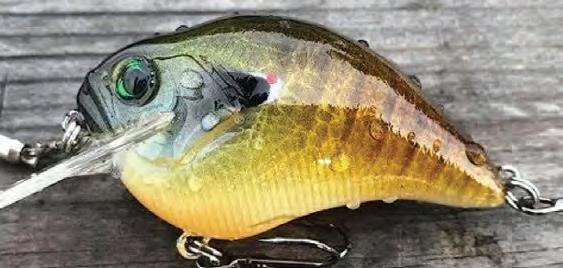
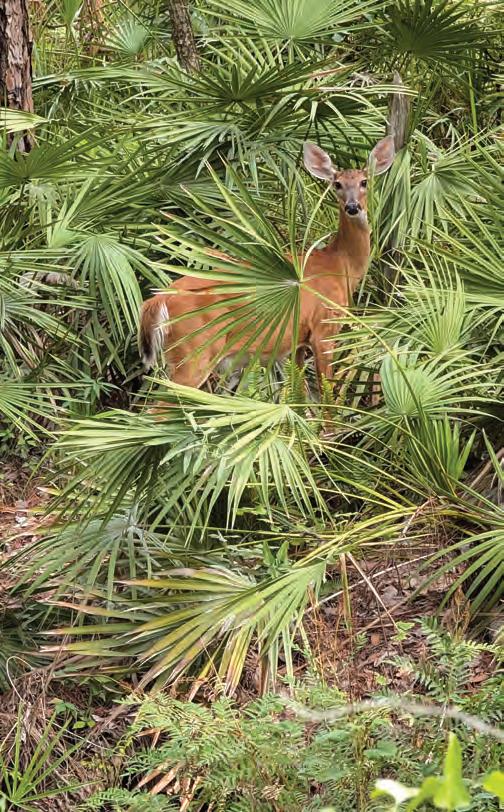
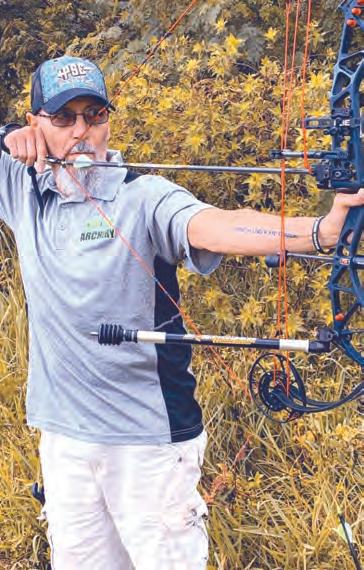
By Bob Fromhartz
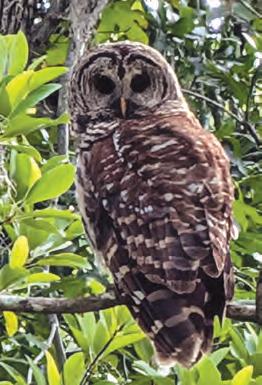
Thirty years ago, after almost drowning in North Carolina’s Nantahala River when our small raft hit a large boulder, I decided to find a new hobby. I chose hiking as it usually doesn’t involve water or drowning. I’ve been hiking for over 30 years now, and for the last 15 years, I’ve also volunteered at Highlands Hammock State Park. HHSP is a great place to see plants and wildlife close up. The loop trail has many side trails that bring you into the real Florida.
I had a hip replaced last year and did an 8-mile hike a few months later. The hip worked, so I try to put some miles on it whenever possible. Besides volunteering at the park, I also volunteer with the Highlands County Master Gardeners. That’s where I met “Bunny”. She is also a Master Gardener and an experienced hiker. Her resume includes hiking to the top of the 19,341 ft Mount Kilimanjaro. We talked about doing a short hike, and as the heat and rain chances got closer, we decided to do some of the trails in the park.
Last week, we drove to the park early and began walking the loop and some side trails. Then we went back to the start of the County Road and headed to where it leaves the park. We took some great pictures of a barred owl on the way as he watched while we passed him. Further up the road, we took more photos of a deer that watched us pass. We also made stops to take pictures and identify different “native” Florida plants. Our hike ended after 3 hours and about 5 or 6 miles.
If you are looking for a place nearby with cooler temperatures, peace, and the sounds of birds, frogs, gators, all with the beauty of nature all around you, and you're ready to escape the US 27 noise and danger. While at the park, visit the Hammock Inn camp store, which has a great collection of books. My favorite is “A Land Remembered” by Patrick Smith. They say this book should be required reading for anyone moving to Florida. I agree. Enjoy your hike...
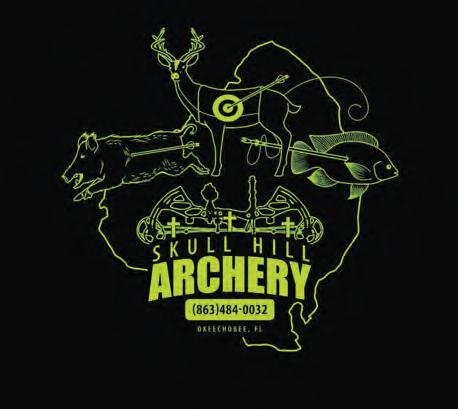
We are a fully stocked Pro shop for all your archery needs. Including consigned and new bows.
• 20 yard indoor range •
• 50 yard covered 3D range •
• Knowledgable bow techs •
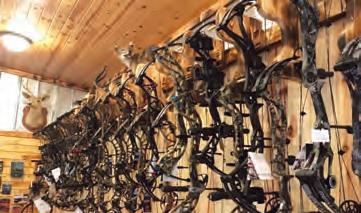
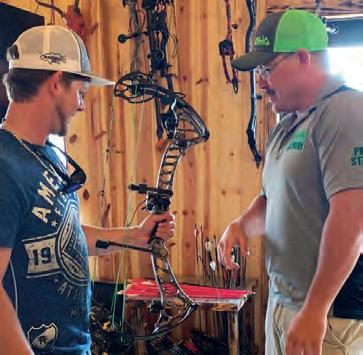
By Dan Echols
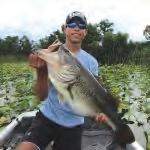
Every really big bass that’s ever been caught has a story behind it. It’s what fishing memories are made of. In the March issue of The Angler, Don Norton wrote in his “Ask Red” column, “Are there Big Bass in Lake Istokpoga?”
In that piece, he referenced Adrian “Lunker Louie” Echols. He mentioned that Louie has 50 bass heavier than 8 pounds registered with TrophyCatch. I’m Louie’s Grampa, and I can proudly say that I was with him when he caught every one of them. He and I were inseparable back in the day. His biggest bass was 14 pounds (Lake Mockingbird…another story), and he caught many other giants before TrophyCatch.
I realized early on that he had a knack. I think he inherited it from his Great Grampa. Don also mentioned the 13-pound. 14-ounce Istokpoga fish that put Louie in the TrophyCatch Hall of Fame. We believe that the bass was “Queenie”. If you don’t know who “Queenie” is, you haven’t read Don’s book, “Queenie…The Legend of Lake Istokpoga.”
This is an excellent story about the life of a largemouth bass growing up in Lake Istokpoga, Florida. The book is available on Amazon or his website at dnortonbooks.com.
This is the short story of the day Louie caught her. I live on Lake Istokpoga, and Louie and I have fished there for many years. We had decided
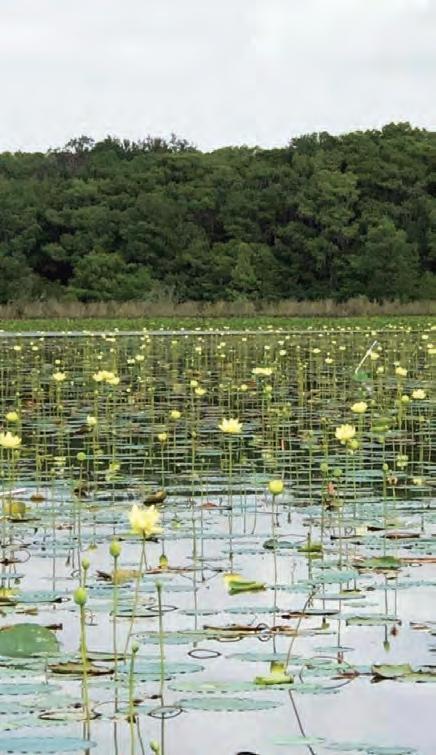
that we were going to pull the boat out that afternoon and haul it to Lake Josephine the next morning, but before we did, Louie said, “There’s still some daylight left, we should go out and fish for a little bit,” so we headed out on Lake Istokpoga.
We didn’t go too far. We got to a spot near some docks, and I had hardly gotten the motor shut off when I heard that familiar whizz of Louie’s Senko. I looked up and we both saw a movement in the pads about five feet away from where his bait landed, and a colossal wake headed in his Senko’s direction. About that time, Louie noticed his line moving in a different direction. He realized that a fish had picked it up. He quickly set the hook, and it was on!
All I heard was “It’s a giant Grampa, it’s a giant!” The fish had doubled back, and his line was now caught in the trolling motor. With the drag screaming, my heart sank. I just knew the line was going to break. If that wasn't enough, the monster had gone underneath a nearby dock. My heart sank some more. It was now complete pandemonium. Louie was in the fight of his life, and I was yelling instructions (as Grampas do). He somehow managed to get the line untangled from the motor, all the while, the fish was going around dock pilings. As we were almost under the dock by now, he fought this bass from one piling to the next, and slowly the fish tired.
When he dragged that bass into the boat, we were both speechless. It wouldn’t fit in the live well, so we weighed her, took some photos, and released her. She swam slowly off into the sunset, and we’re happy to say that she was fine (a little tired) and “Queenie” still haunts the murky waters of Lake Istokpoga.
We still talk about her from time to time. A memory was made that day that neither of us will ever forget…and that my fellow anglers is the rest of that story. By the way, there ARE big bass in Lake Istokpoga.
— Dan Echols, United States Army Veteran
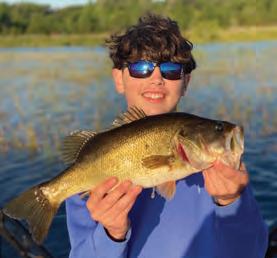
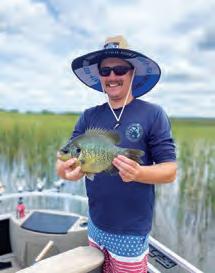
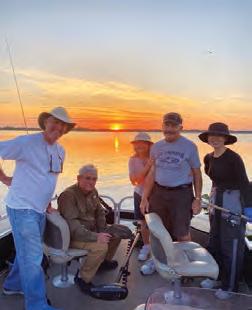


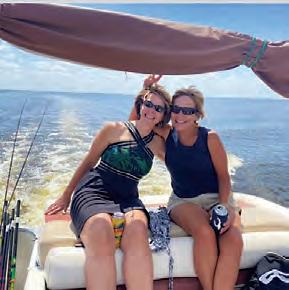

Hey June, it's summertime in Southwest Florida. What this brings is hot weather and some very hot fishing. It's hard to have a bad bite on the harbor, but there are times of the year that just stand out. Well, this is one of those months when we are not officially in the rainy season and are not crazy hot. We still have some of our migratory fish hanging around. If you fish in the deeper areas of the harbor, you might have a shot at a cobia. Also, the mackerel might still be hanging around the bait schools.
Snapper is one of my favorite fish to target on some of my charters this time of year. I get a lot of kids out on summer break who want to catch a lot and keep count. If the water is clear, they can be a little spooky. You may need to lower your leader and hook size. These guys are willing to take various baits, from live shrimp to small pieces of cut bait. Deep points with good moving water will hold good numbers of fish, as well as docks and other structures.
With summer moving in and the waters warming up, it's always good to watch the weather. Thunderstorms can form fast and produce some nasty lightning.
If you would like to experience some of Southwest Florida's fishing? Give us a call or send an email. All our adventures are private and customized for you and your party's needs.
— Capt. Dave Stephens 941-916-5769 | www.backbayxtremes.com

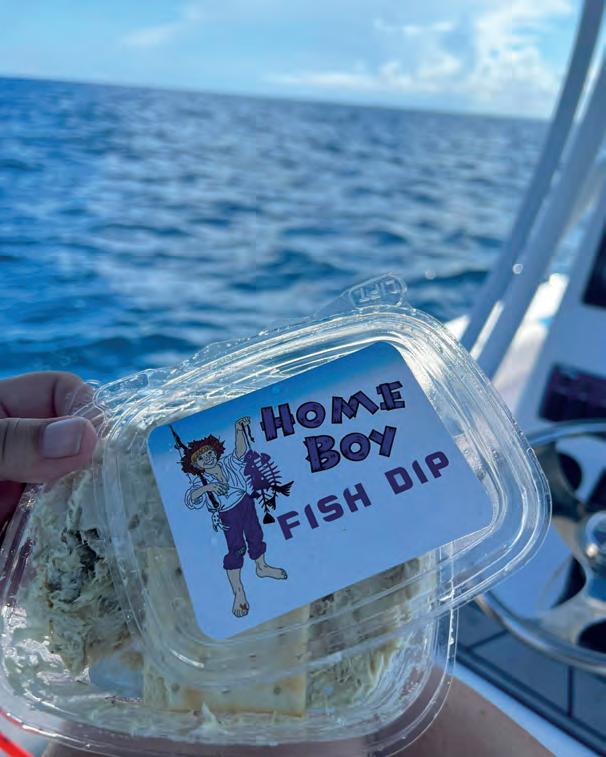

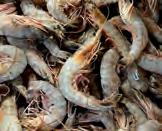

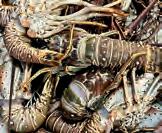
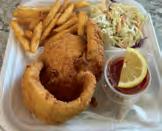


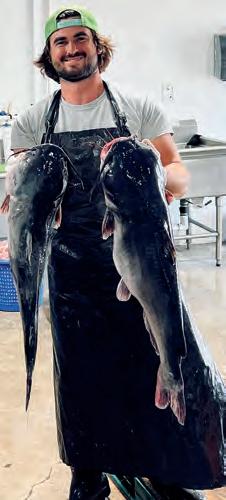
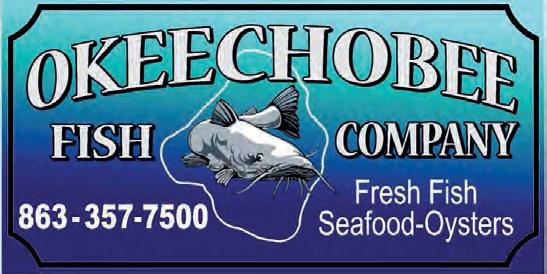
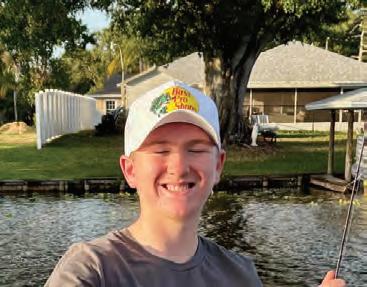
owners, members of the local sheriff's department, and members of the FWC. In addition to being a fishing club, the members are working on two major projects with the FWC on local lakes: cleaning up local boat ramps and assisting HCSO with upcoming youth events.
What sets this club apart from other clubs is the fact that the members will be involved with the following items.
1. Monthly Zoom meetings with top pros to discuss new baits and techniques and have a question-and-answer session.
2. Members will be added to several sponsor pro staff teams.
3. A YouTube channel was created for members to post their social content and how-tos.
4. Family outings with cookouts and scheduled events.






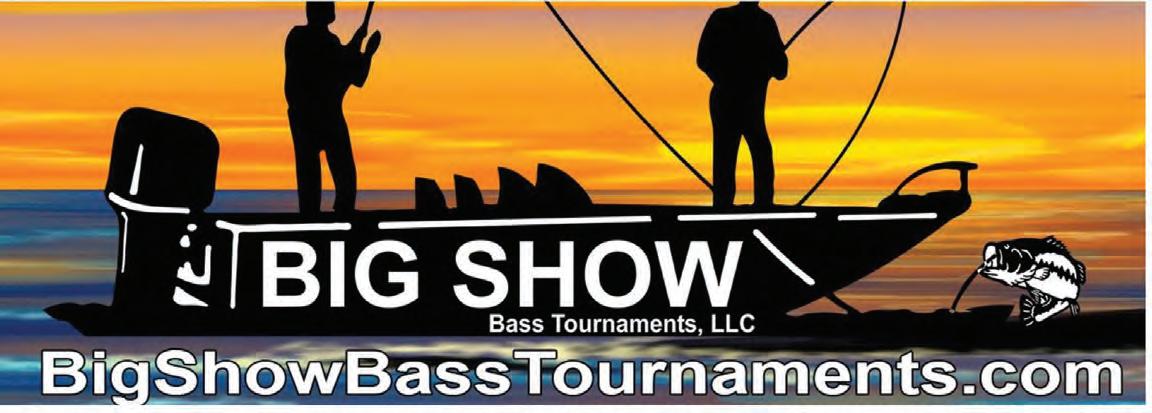
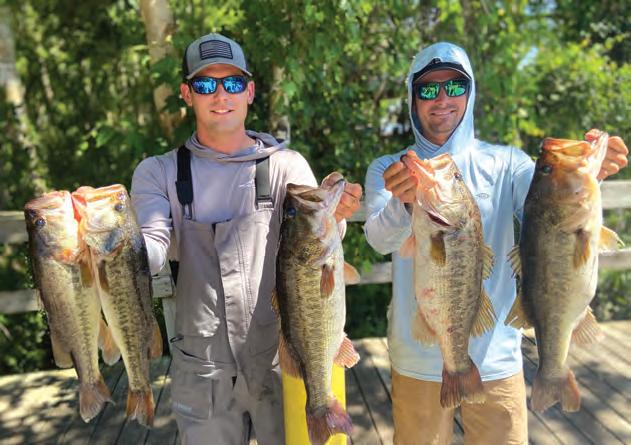
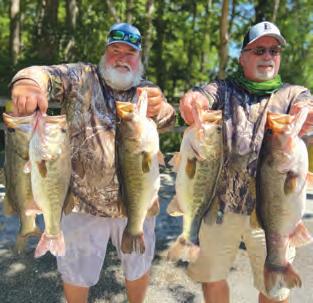
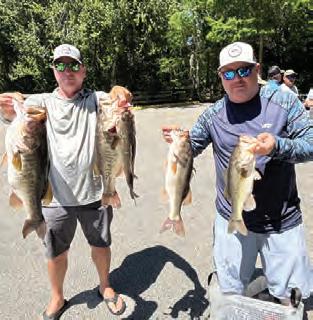
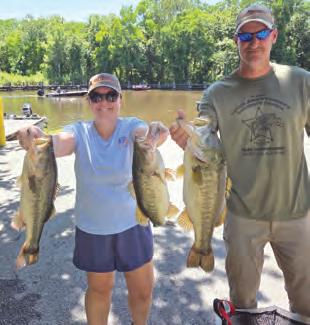
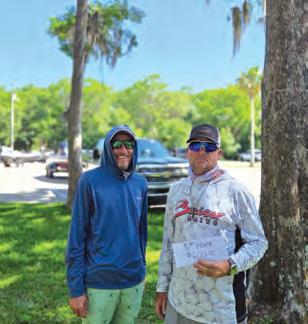
By Don Norton
The much-anticipated two-day Big Show Bass Tournament Classic was held on Lake Istokpoga on April 12th and 13th, 2025. Forty teams qualified to fish in the event, and it wasn’t the first time the team Roberts and Roberts demonstrated their fishing skills by winning the event with a two-day total of 54.11 pounds. The first-place team took home a check for $10,000.
The weather couldn’t have been better. Everyone caught fish. “It was a very successful year for the Big Show,” John Wood, owner and tournament director, said, “I think everyone had a good time. The competition was fierce.”
Day one of winners catch= 23 lb 10 ozs day one, 31 lb 1 oz. Day two, Coleman Roberts and Ben Roberts 54 lb 11 ozs. total. $10,000.00 first place prize money.
Second place Eric Gaines and Bruce Noel 44 lb 3 ozs. Day one 13 lb 8 ozs. and day two 30 lbs 11 ozs. $3600.00 prize money
Third place DJ Green and Jennifer Green 37 lb 5 ozs. Day one 21 lb 1 oz and day two 16 lb 4 ozs. $1600.00 prize money.
Forth place Brad Day and Cody Craig 34 lb 11 ozs. Day one 22 lbs and day two 12lb 11 ozs. $800.00 prize money.
Fifth place Axel Riley and Josh Shugars 33 lb 15 ozs. Day one 19 lb 10 ozs. and day two 14 lb 5 ozs. $600.00 prize money.
Big Bass for year Greg Jones and Jett Dexter, 9 lbs. Caught March 2nd 2025. Won $460.00 that day for big bass. Year prize additional $1350.00.
Flat Out Tungsten Team of the Year Corey Vrabel and Austin Reeves. Prize money $800.00 and some trophies. Thanks to Steve Dial for helping support this award.
The 2025-2026 season will begin later this year.
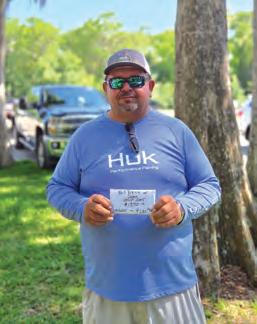
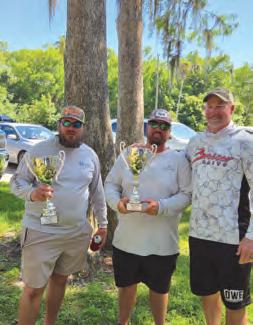
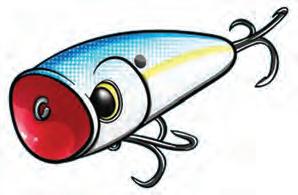
By Doug Williams
In 1951, you could hear a very young Charlie Hines and his band playing country music on the only country radio station in Elizabethtown, Kentucky. Many years later, you could enjoy Charlie’s guitar picking and his rendition of the old country tunes in his workshop, surrounded by 1,000’s of antique and contemporary fishing lures.
The Charlie Hines story is about an antique fishing lure collector turned artist. Charlie fished and collected old lures for years, and decided, because “it was better than sitting around and watching television,” to make his own versions of the wellknown, classic lures that were produced by South Bend, Creek Chub, Heddon, and others. Charlie’s use of creative paint colors and unique use of hardware put his lures in the class of “contemporary” lures that were seldom fished but displayed as creative pieces of art.
Antique fishing tackle collectors are often “hooked” by these contemporary lure makers and expand their collections to include some of my favorites like Tony Smith, Todd Fortini, Jan Cummings, Norman Wine, Scott Morgan, “Doc” Hyder, Aage Bjerring, Little Sac Tackle, and Rusty Jessee. Each of these gentlemen have their own unique style, and similar to collecting great painters, it never hurts to have “just one more”.
If you would like to learn more about vintage, antique, vintage, or contemporary fishing tackle, feel free to contact me via text or telephone at 305-926-7526. I enjoy helping people learn about the history and collector value of their old fishing tackle.

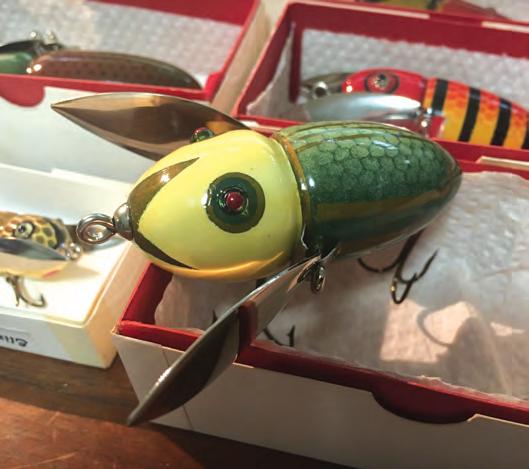


Located on 2,000 acres of Florida bays, pines, palmettos, and oaks, outside the small town of Lake Placid, the Lightsey Family Ranch is perfect for the avid hunter and outdoorsman. Owner and lifelong hunter, Lee Lightsey, offers you to a one-of-a-kind hunting experience, including wild hog, quail, pheasant, turkey, deer, and alligator hunts. During your hunt you are welcome to stay at our lodge which features room for up to 28 guests, a large lobby with a true old Florida feel, and a full time Chef ready to prepare your meals.
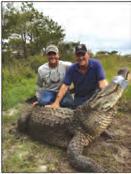
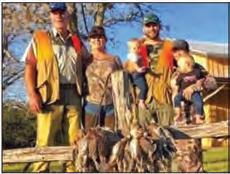
of
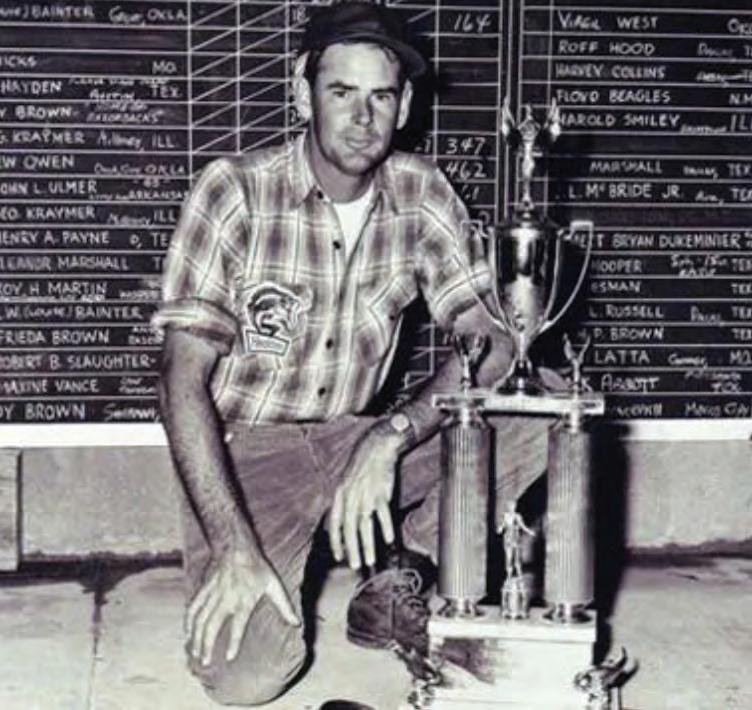
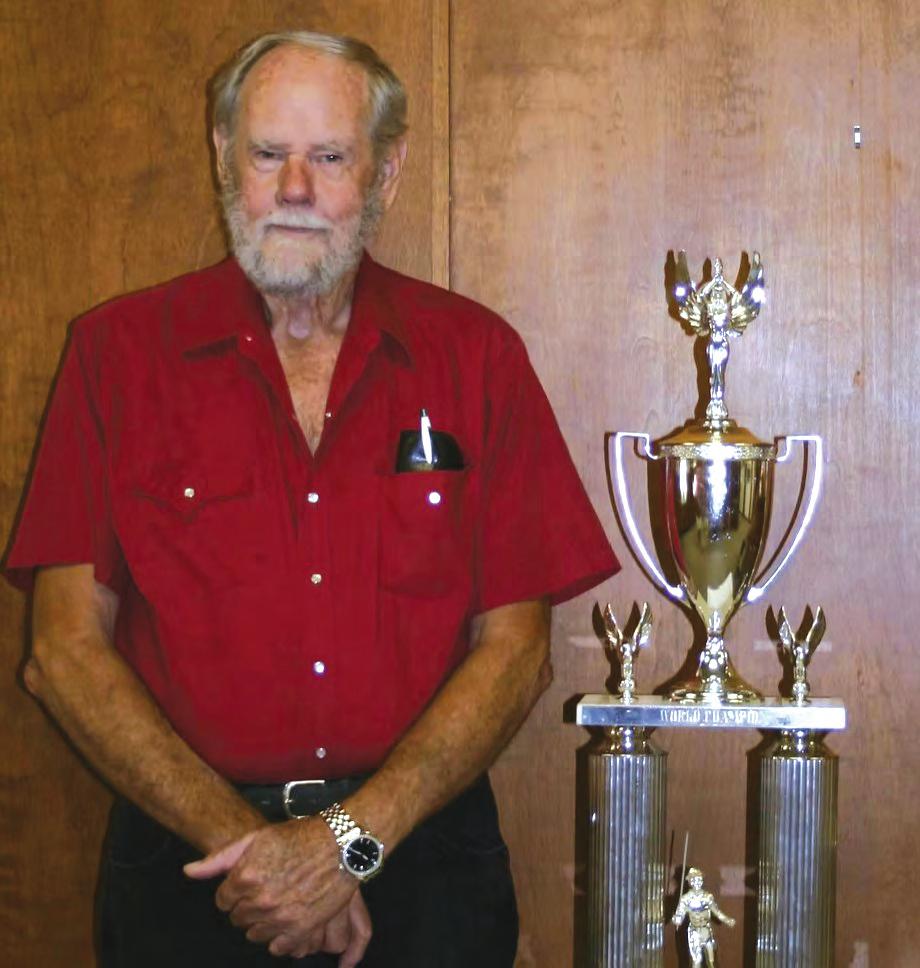

There was a time when Andrews was considered the best bass angler in the world. He had the credentials to prove it. But the memory of who he was has quietly dwindled from the annals of bass fishing. Andrews impact on the sport of bass fishing, though, along with his memories, have stood the test of time.
“I believe my dad is the missing link,” said Shane Andrews. “He trained Ray Scott. He trained Bill Dance. He trained Bobby Murray and so many more. Nobody knows that, and he’s the one who kind of slipped through the fingers like sand.”
To understand that statement you have to go back to the 1960s. Professional bass fishing as we know it today was still in the womb, incubating and growing for its birth in 1967 at Beaver Lake. Glen Andrews was one of its fathers.
There were tournaments back in those days, but few that were strictly centered on bass fishing.
“It was fresh water fishing, it wasn’t just bass fishing,” Andrews said “We could catch crappie. We could catch perch. We could catch catfish. We could catch walleye, trout, bass. But bass was the number one thing. If you weren’t a good bass fisherman, you didn’t have no business in the tournament. You couldn’t win nothing. Because that’s where the big points were. Points were a lot bigger on bass and trout.”
Each species was weighed separately and each ounce was worth varying amounts of points. For instance, crappie were worth 1-point per ounce, while bass were 3- to 5-points per ounce. “A 5- or 6-pound bass would be worth 200 points or more, where a limit of crappie might be 50 points,’’ Andrews said. “But those could be important points.”
That was the outline of many of the fishing contests of the day and none were bigger than the World Series of Sport Fishing. Started by Hy Peskin, world-renowned sports photographer for Sports Illustrated, who by some accounts began the venture with Ted Williams of Major League Baseball fame. One of those events combined saltwater with freshwater. But for the most part these events were held within the heartland of country.
You got to those events via an invitation from Peskin or qualifying through a state championship. In Andrews case, he lived on the border of Missouri and Arkansas and qualified
through the Show Me State’s championship.
In 1962, a 22-year old, Andrews fished his first World Series of Sport Fishing in Oklahoma. It was a 5-day contest held on a different lake each day, most of which Andrews had never seen before. But he finished a very close second to Virgil Ward of early fishing television fame, which fit right into Peskin’s plans for the World Series. He believed, outdoor writer or television show winners would launch his championship to another level.
Like so many who preceded him, Andrews was bitten with the bug. He was a full-time guide who spent every day competing for clients with other guides, so slipping into the game was natural. His skills at finding fish and catching them built his reputation, especially among outdoor writers from the states surrounding Missouri and Arkansas.
10 on the strength of a 4-ounce bream, caught a 5-pounder that day and won the Championship, putting Andrews as runner up for the second year.
“Peskin got what he wanted,” Andrews said. “But I still feel like I won that event.
“The guy won it accidentally. He illegally caught a 5-pound bass. He was fishing, and he threw his rod down in the boat when a big bass broke on the other side of the boat in open water. He caught a 5-pound bass, but he did it illegally, because he had the other line in the water and everyone could see that. You couldn’t have two lines in the water at the same time. They wouldn’t do anything about it, though. They still gave him his trophy instead of giving it to me.”
...the most-feared angler in the region would not be in the event..., it was unfettered access to Andrews' little black book of anglers already accustomed to fishing tournaments.
With that reputation and his strong showing in 1962, Andrews was quickly becoming recognized as a force in the fishing world. He was preparing to make it even stronger in 1963. Already qualified for the Championship, this time on Bull Shoals, Andrews started to get a glimpse of how those early tournaments played fast and loose with the rules. Those lessons would be invaluable to Ray Scott when he started building Bassmaster events. It started with a phone call that informed Andrews he wouldn’t be able to fish the 1963 event. He had guided on the lake and a lastminute decision had been made to keep him from the competition.
“I told them ‘you can’t do that. By your rules, I’ve qualified for this event,’” Andrews said. “But they didn’t care.”
Over the next few days, all the outdoor writers Andrews had taken fishing went to his rescue in papers from St. Louis to Little Rock. Feeling the pressure, Peskin relented but just to a point.
“He asked me, if he let me fish would I do it by his rules,” Andrews said.
Those new rules lined up like this: Andrews would accept a 104-minute penalty each day in the 8-hour event. The typical day in the Championship had the angler fish with an observer. In Andrews case, Peskin paired him with two observers, no small thing considering the boats were in the 16-feet long range. But Andrews accepted his penalties and four days later he had amassed an insurmountable lead in the contest going into the final day.
That’s when the rules switched again. Andrews was still saddled with a time penalty and two observers, while Peskin decided to zero the weights going into the final day for the top 10 and to make matters worse, put all 10 boats in one big cove, where thousands of spectators were expected to come and watch the final day. Legend says that less than a dozen perched on a cliff to watch the action. And there wasn’t much to see. Ken White, who edged Virgil Ward out of the top
It left a sour taste in his mouth. To add to it, the Missouri contingent asked him to not fish in 1964. He relented and sat out a year. But in 1965 he came back and in a big way. He qualified again, this time on Lake Tawakoni in Texas. In practice for that event, Andrews was constantly harassed by a boat that buzzed him all day.
He learned the harassing boat was being piloted by a gentleman who had bet $10,000 on another competitor and he was hoping to run Andrews off the water.
“When that didn’t work, he jumped me in the parking lot,’’ Andrews said. “His first punch took out two ribs. But 5 minutes later he was begging me to stop hitting him.”
The damage was done, though. Andrews suffered two broken and separated ribs and two broken bones in his right hand.
“The next morning I couldn’t hardly get out of bed,’’ Andrews said.
He fished the Championship in intense pain and was forced to cast left-handed. It didn’t matter, though, Andrews won his first World Championship. Intending to retire, he was spurred to go another year when he was told no one had ever won two. In 1966, he returned and won the event again on Lake Eufaula.
rig. In the 1960s, it was the Andrews Slip-Sinker Worm.
Then along came Ray Scott and his idea for the All-American on Beaver Lake. By then Andrews was guiding on Beaver as well. Scott was spurred by local businessmen, all who knew of the shenanigans of these past events, insisted Andrews give his approval and be involved in the event before they showed their support.
Always shrewd, Scott, who didn’t want local guides in his early events, enlisted Andrews as his “Chairman of Rules.” That was something Andrews was passionate about, for obvious reasons. Andrews preached the importance of having and following strict rules to Scott. It was a sermon Scott would soak in and fall back on for decades.
For Scott having Andrews around served several purposes. One, the most-feared angler in the region would not be in the event. Two, the locals would sign off on it. But as important as all those things were, it was unfettered access to Andrews’ little black book of anglers already accustomed to fishing tournaments.
Andrews and Scott, working in the back office of Rogers Chamber of Commerce with a donated Watts Line, would spend the evening calling anglers from Texas and Oklahoma to Illinois, enticing anglers to come fish this “new kind of derby.” They would make sojourns to states close by. On one of those they met a young kid named Bill Dance while fishing on Pickwick, inviting him to come fish the AllAmerican.
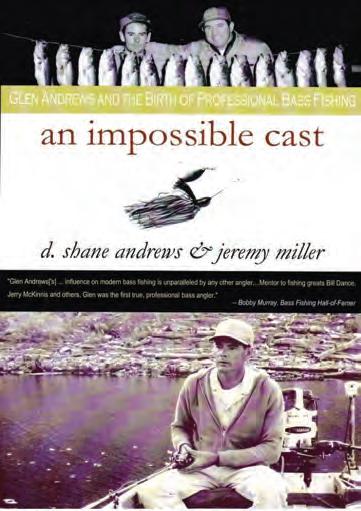
“I can still remember Glen and Ray pulling up,’’ Dance recalls. “After we finished talking, Glen said, ‘if you will cast out there behind you in 17 feet, you will get a bite.’
“I was like ‘whatever.’ I had never fished much deeper than 3- to 5-feet deep. But when they went around the bend and got out of sight, I threw my worm out there and as soon as it hit the bottom a fish bit. I went nuts. 17-feet of water! I couldn’t believe it. I did it again and again.
From 1962 to 1966, Andrews had won three Missouri State Championships, an Arkansas State Championship, was the runner up twice in the World Championship, followed by two World Championships. In all of those events he never made a single dollar in prize money. But his reputation, guide and lure business were flying high. He had helped develop and was the first man to market what is now known as the Texas-
“After that I called Glen every day during a tournament and he coached me. He taught me so much. I wouldn’t be here today without him.”
Bobby Murray has expressed similar feeling toward Andrews as a mentor, as has many anglers from that era, including Jerry McKinnis, Jimmy Houston, Johnny Morris and Roland Martin. Andrews’ reputation and leadership placed
By Don Norton
Ifished my first bass tournament two and a half years after Ray Scott held his first bass tournament on Beaver Lake in Arkansas and later formed the Bass Anglers Sportsman Society (B.A.S.S.). I probably would have fished a bass tournament sooner, but in April of 1968, I was drafted into the United States Army. Two years later, I couldn’t wait to compete.
My dad, who loved bassfishing as much as I did, kept me informed about what was happening on the tournament scene in many of the letters from my mom, and I was sure this would be my calling.
... Palaniuk went on to win the tournament, but the true champion was respect, honor and showing the world how competitors at the highest level should act.
Bass clubs were forming all over the country, and regional and state bass tournaments followed the same guidelines as B.A.S.S. I remember those days well.
Many of the tournaments were held in other states, and because they were “draw” tournaments, it wasn’t unusual to take your boat and end up leaving it in the parking lot because you drew a partner who also had a boat, and you lost the coin toss.
Very few “team” tournaments existed in those days. As a result, I fished with guys from all over the country. Some were great fishermen and became lifelong friends, while others were often difficult to fish with.
One thing that stands out in my memory is the extent to which some anglers would go to hide the fishing lure they were using. Even though you


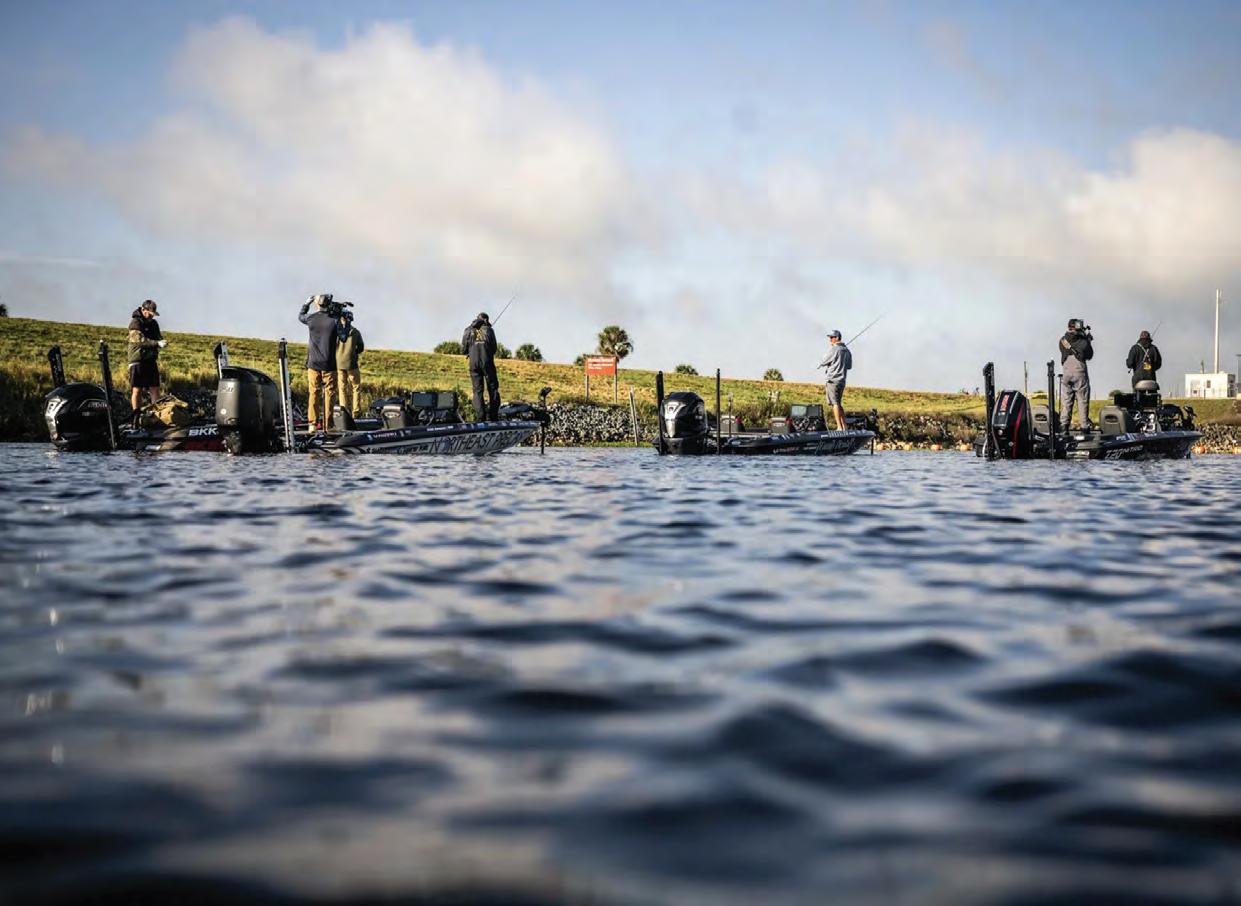
were in the boat with them, they would try to hide their “secret lure.”
And don’t get me started on the territorial disputes between anglers. Because many of the tournaments were two-day events, anglers who fished the first day and returned to the same spot the next day were often angry because their first-day partner was already there.
Unsportsmanship prevailed in many tournaments and may have indirectly resulted in the eventual change to team fishing. But times change. In the current BassMaster Magazine (May 2025), there is an excellent article with pictures entitled Fiercely Proper. During the 2025 BassMaster Elite at Lake Okeechobee, anglers Greg DiPalma, Brandon Palaniuk, Will Davis Jr., and Timothy Dube all found a very productive area to fish in practice.
All four anglers pounced on the area during the first day of competition. And, instead of claiming water rights or screaming for space, they shared. They shared a lot.
As stated in the article, the photo shows DiPalma sharing what’s tied on the end of his line. Not only did he not keep the bait secret, he willingly told the other anglers in the group how he was catching the fish. His five biggest, by the way, weighed 29.12 on Day One. Davis Jr. brought 26.2 to the scales; Palaniuk had 23.7 and Dube 18.3. The foursome were in first, second, third and 10th, respectively. Yes, that was a magical pile of fish.
But the sharing didn’t stop there. The group rubbed rails throughout the rest of the event. Palaniuk put an exclamation mark on being fiercely proper when, after he landed two 8-pounders on consecutive casts, he pulled out his crankbait box and gave lures to the other competitors. His five biggest bass on Day 2 went 34.10. Palaniuk went on to win the tournament, but the true champion was respect, honor and showing the world how competitors at the highest level should act.






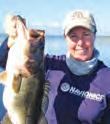
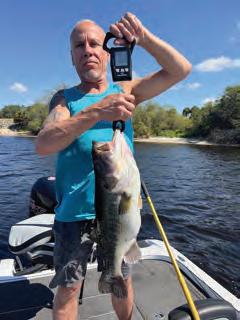
Lake Okeechobee’s water level continues to fall, with the current level around the 11.44 ft mark. Most of the fishing at this time of the year is in the Kissimmee River, launching out of Scott Driver Park; Harney Pond canal, and Indian Prairie canal for fishing in those areas.
The month of April, moving forward into the Summer months, is a great time to fish deep water for bass, and the bluegill move up on the River edges and spawn, so bass and bream fishing is excellent and can produce some big bass. On April 28th, I booked a 3-day bass trip using artificial lures only, and within these 3 days, it produced two big bass weighing 8.64 lbs. and 8.40 lbs., throwing plastic worms.
Howard, from Illinois, had the best day of his life with two “TrophyCatch” entries that day and only 20 minutes apart. The Kissimmee River holds a lot of bluegill, and crappie are still being caught early mornings and late afternoon into the evening hours. If you know the lake well and want to try fishing on the lake, Tin House, Indian Prairie, the point of Horse Island, and some areas on the shoal are good areas to try.
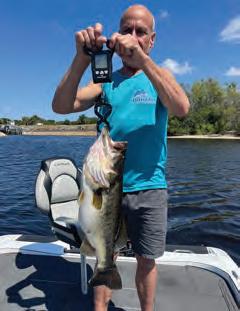
For bass, try throwing plastic frogs (popping), swim jigs, swim baits, senkos, and top water. The colors are Junebug, red shad, white, black/blue, and watermelon/red.
Crickets and red wigglers rigged on a 7 ft ultra-light spinning rod/reel with 4 lb test monofilament, small split shot weight, and hook work very well for bream


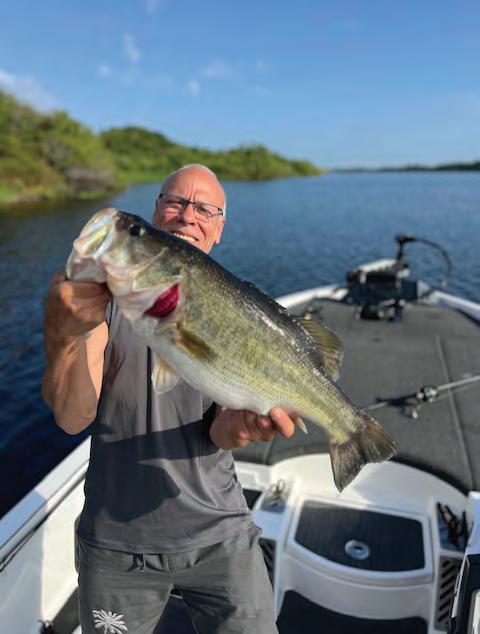
fishing. If you’re fishing the River, be prepared to catch some fingerling catfish (sharpies). It’s all a fun time and a great time of year to get the kids involved for a morning or late afternoon fishing timeframe.
— To book you’re next fun day fishing, call 863-7263 or check out my website, where you’ll see up-to-date info, customer catches, hotel info, past reports, and more www.southfloridabassfishing.com. I can accommodate groups of people; I offer Veteran and one-person discounted trips. Inquire when calling to book. A big thank you to my sponsors: Mercury Marine; Toho Marine (St. Cloud, Fl); Bullet Weights; G-Loomis; Lews; BnM Poles; Bobby Garland; Rapala; Gill; Gene Larew; Lurenet.com


Jennifer M. Bush - Executive Director 863-465-4331 - jennifer@lpfla.com
33852

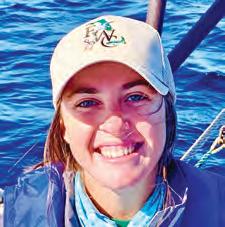
By Sara Menendez

habitat does not provide the right conditions for these two fish species. Smallmouth Bass prefer cooler, fast-moving water with rocky or shell bed substrate. While these fish could survive the winter months in Florida, the summer months would be disastrous for this species, as water temperatures can reach or exceed ninety degrees. Even though Smallmouth Bass ranges extend into southeastern states like Alabama, Mississippi, and Texas, the deepwater reservoirs and lakes of those states provide cool water refuge for Smallmouth Bass. With our relatively shallow Florida lakes, the habitat is not ideal for these fish to survive in during the warm summer months.



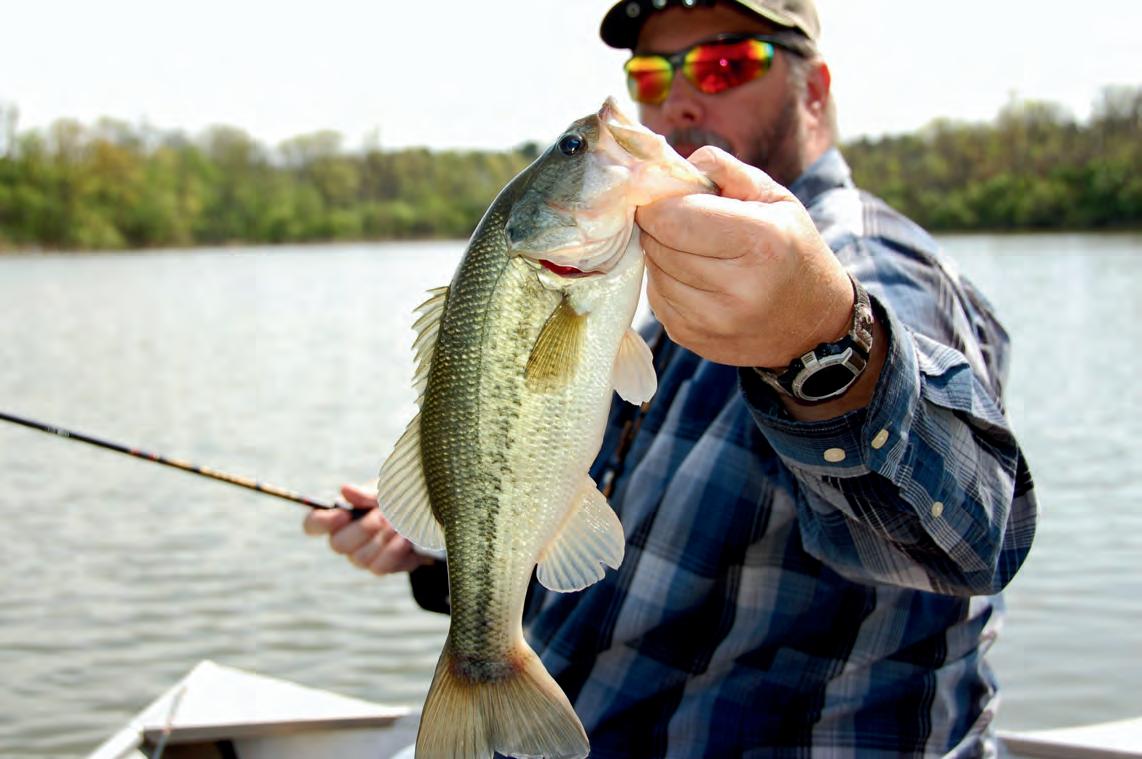
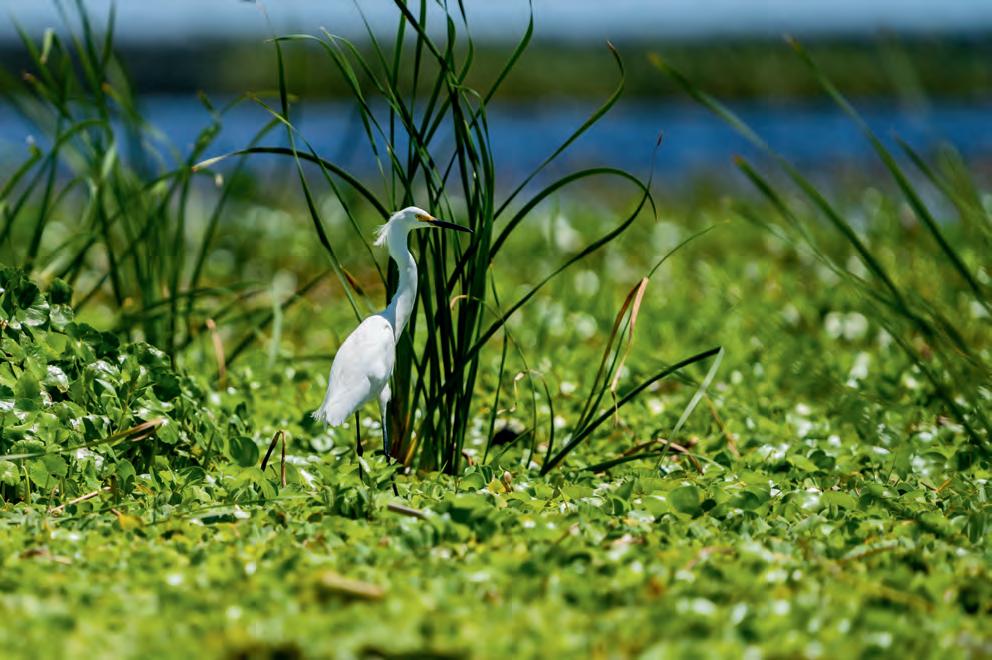
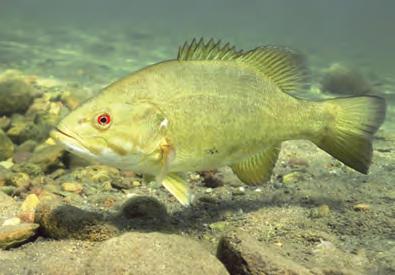
Likewise, it’s a similar story to why we don’t see Walleye in Florida. Warm water temperatures are inhabitable for these fish to live in and reproduce successfully. Walleye prefer water temperatures between 40 and 70 degrees, and northern lakes experience these temperatures throughout the year. Florida waterbodies are lucky to stay within this range for a few months, and the southern part of Florida is likely to only get a few weeks of water temps that low! Habitat for spawning preferences for Walleye aren’t really seen much in Florida. These fish prefer to spawn when water temperatures are in the 40s and use areas that are highly oxygenated, and fast flowing, like gravel bottom riverbeds. While Walleye also can spawn in lakes that have rip rap around the edges, it’s that cooler water temperature component that is key for these fish species.
While fishing for Smallmouth Bass and Walleye requires some out-ofstate traveling, Florida is home to plenty of fantastic lakes and rivers that provide their own unique fishing opportunities and plenty of sunshine! Tight lines!
Experience world-class bass fishing in the heart of Okeechobee, FL, where every cast is an opportunity for an unforgettable catch.

him as president of the Professional Sports Fishing Association (PSFA), a group of anglers who started an advocacy group soon after the AllAmerican. Their hope was to fold B.A.S.S. into their organization. History tells us that didn’t happen.
Scott had lit the fuse on a rocket ship and he soon left everyone behind in the pursuit of having a tournament organization with no shenanigans. Andrews’ position in a soonto-be defunct PSFA, left him out of the limelight and arguably shunned. By the 1980s, few anglers were left who remembered the impact Glen Andrews had on the sport of bass fishing.
"I knew early on that there were patterns, that bass have a pattern they follow year after year after year." Those seasonal patterns worked on the fisheries as well.
By absorbing the figurative and literal body blows of early competition, Andrews ensured that Scott’s early rules were written in stone and strictly followed. Many of his friends and cohorts helped fill the field that kicked off the sport and his willingness to help a long list of up-and-coming anglers paid dividends that all Bassmasters have reaped in some form.
While Andrews remembers the fish catches, the rest of us should never forget the impact.
Glen Andrews was obviously a phenomenal bass fisherman. But what made him so good?
Some might expect his super-natural skills were just that; supernatural, a prodigy of sorts. In truth Andrews was on the forefront of so many things in the bass fishing world, that what made him great has since become basic bass fishing for the rest of the world. It just wasn’t so basic in the 1960s.
It started with a mentor. In every great angler’s life there is someone who laid the groundwork. In Andrews’ case it was Joe Lindsey of Harrison, Ark., an early guide on the lakes of the White River Chain.
“He was the greatest bass fisherman I’ve ever known and I’ve known about all of them,” Andrews said. “He took me under the wing, and for five years, every day, he coached me. He taught me how to find bass. He taught me how to catch them.
“He said, ‘You know. The important thing is finding the bass. You can take an idiot and knock his brains out and he can catch a limit of bass if you got someone to put him on top of them.’”
Armed with the knowledge of how to find bass, it improved drastically by the timing of those lessons. One has to remember in the early 1960s, a tremendous amount of water was being created by the Corps of Engineers in an era when lakes all over the country were in their infancy. When Andrews’s first guided on Bull Shoals, it was 25 feet from being full. The visual of dry land soon to be inundated along with an uncanny memory of a what a lake

looked like underneath the surface far outweighed the rudimentary maps of the day. Some could make the case it was the side-imaging of the day without the electronics.
Seeing a point prior to flooding and then after helped Andrews visualize in every fishery he traveled to. All of that helped his fishing skills, but it didn’t necessarily improve his derby skills. That would come in the most natural of ways.
“You’ve got to remember, I guided for a living,” he said. “We had 15 or 20 guys, but there were 10 guys you had to compete with every day. You had to produce or you’d lose your customers. It was a dog fight every day who was going to have the best string of fish out of 10 guys. I got pretty good at it, and of course I’d hold my own.
“That’s one of the reasons that bass fishing tournaments were so easy for me, because the pressure didn’t bother me one bit. I was used to it. I fished against it every single day. I didn’t have nearly the competition in the World Series of Sport Fishing as I did from those guides.”
With about 20 or more years of full-time guiding, trying to feed a family, that can produce a lot of pressure. But he caught on quickly, even foreshadowing the ways pros in coming decades would build their names by creating relationships and building his brand in the media. By the late 1960s he was considered the best in the business.
That need to succeed didn’t end there. Because guiding was his business, Lindsey encouraged him to keep records.
“I kept a daybook,” Andrews said “Every day I put down how deep my bass were, what I caught them on, what kind of water they were in. Was it steep bank, was it bluff, was it long drop off corner. After five years, I looked at that book and realized I was doing the same thing every year with the same lures and fishing the same kind of waters.
“I knew early on that there were patterns, that bass have a pattern they follow year after year after year.”
Those seasonal patterns worked on other fisheries as well. And it was simple as looking at a map, comparing with the daybook and testing it wherever he went. It was those patterns, that hadn’t even come to light for the rest of the world until Roland Martin introduced them in the 1970s, that Andrews would use to coach Bill Dance, Bobby Murray and many others.
To add to those, Andrews is credited with developing the Texas-rig worm. It wasn’t called that then, bearing the more concise “slip-sinker worm.” Back in those days, before the advent of terminal tackle packs full of lead, anglers would often cut the bottom from a bell-shaped sinker, discarding the swivel and slipping it on the line. Andrews was the first to market what has come to be one of the mainstays of fishing world in the form of the “Flitter Tail Slip-Sinker Worm Kit.” You got three worms, three sinkers and three hooks in that package with a lesson on how to use it.
The slip-sinker worm would become the meat in Andrews’ arsenal as it has in many arsenals since.
You put all those things together in the early 1960s and you have Glen Andrews, an angler who used the basics to rule the bass fishing world for a decade, teaching the rest of us how to follow.


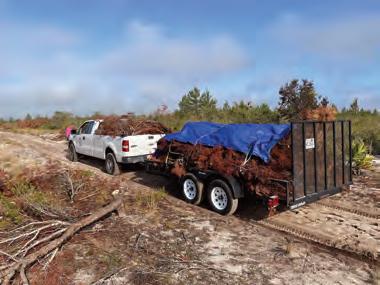
The Ridge Rangers have recently been involved in a major project focused on sand pine reduction at Carter Creek (Lake Wales Ridge WEA), a task that saw volunteers working diligently throughout the fall and winter months. You might wonder what happens to all the sand pines that are felled during this process. While many are left in place to provide extra fuel for future prescribed burns the Ridge Rangers, alongside FWC biologists, have found a new, innovative use for the trees.
Last month, the Ridge Rangers returned to Carter Creek to collect and transport some of the previously felled sand pines (6 feet or shorter). In a collaboration with aquatic habitat and fisheries biologists, these trees are being repurposed to enhance the habitat of Lake Istokpoga. The team is stacking the sand pines on top of one another to create a complex reef-like structure along the shoreline of the lake. This new habitat will provide a safe refuge for young or smaller fish, offering them places to hide from predators
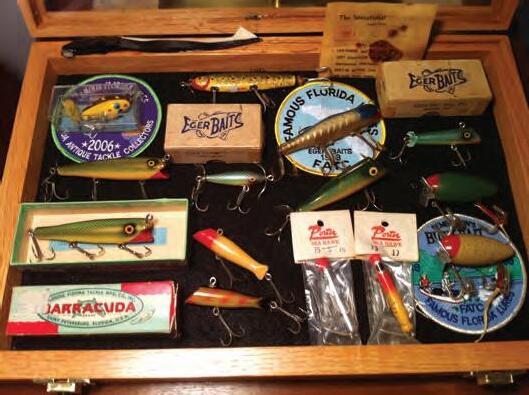
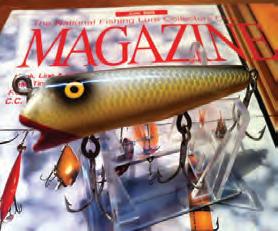
in the otherwise open waters. The project aims to boost fish populations by providing crucial shelter, showing how creative conservation efforts can make a lasting impact on local ecosystems.
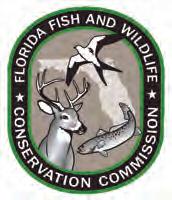

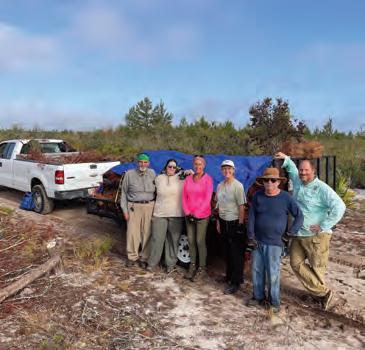
If you would like to learn more about this project, similar volunteer projects, or how you can help conservation along the Lake Wales Ridge, please contact Jonathan Foligno, Ridge Ranger Volunteer Program Biologist at Jonathan.Foligno@myfwc.com.
— Ridge Rangers and FWC biologists plan to continue this work at Carter Creek through March. For more information about volunteering for these workdays, please contact Jonathan Foligno at Jonathan.Foligno myfwc.com.

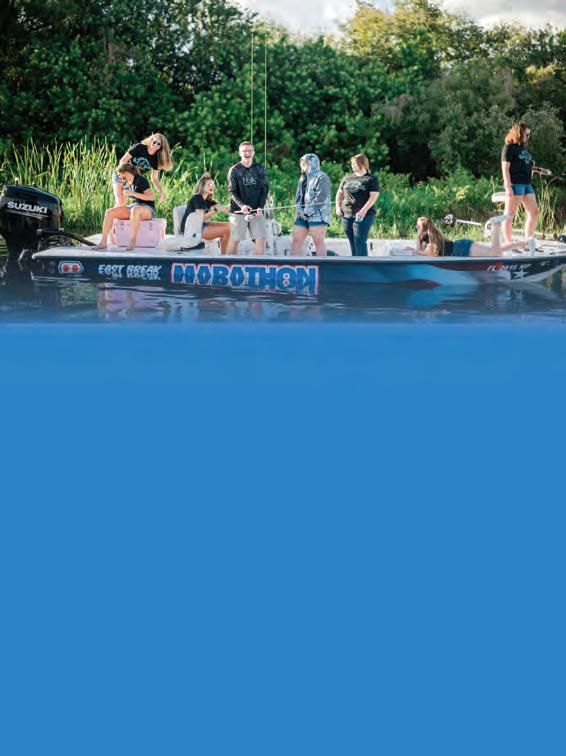




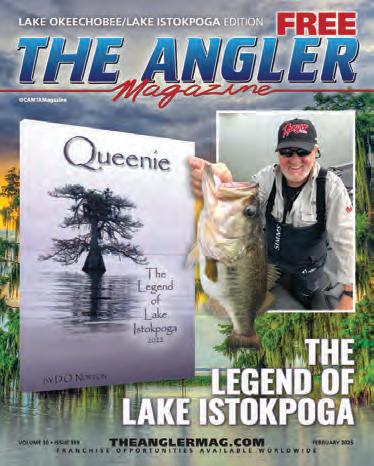
Avon Park Chamber of Commerce ............28 E Main St
Wild Turkey ................................2751 US Highway 27 S
Palmer ACE Hardware ..........................415 W Main St
Williams Pawn & Gun .............................937 W Main St
Pure Grit .................................................907 W Main St
Hendricks Corner Bait Shop ..............202 East Main ST
Layes Tires 1092 Locke Street
Bill Jarrett Auto ........................1305 US Highway 27 N
Big T Tires .....................................1109 W Main Street
Huston Chevrolet .........................650 US Highway 27 S
Dennys ........................................................4390 US 27
Huston Dodge Jeep ..................................2750 US 27S
The Western Cut .........................................500 W Main
Sebring Chamber of Commerce .. 202 Circle Park Drive, Beach House Books & More ........3210 Physicians Way
Grateful Hearts ...................................330 US Hwy 27N
McKibbens ............................................ 7820 Tractor Rd
Schooners BBQ ............................... 4908 US Hwy 27 S
Sebring Diner............................. 4040 US Highway 27 S
Truist South (Publix) ................. 3012 US Highway 27 S
Sherwin Williams ...........................1132 Lakeview Drive
Sebring Toyota ............................404 US Highway 27 N
Hibachi Japan ...........................2870 US Highway 27 N
Musselmans ............................4230 US Highway 27 N
Highlands County YMCA 100 YMCA Lane
Allen Jay Chev...................................441 US Hwy 27 N
Allen Jay Nissan ..................................1700 Flare Road
Allen Jay Ford..................................5330 US Hwy 27 S
Food for Thought ...............................315 US Hwy 27 N
Caddy Shack .....................................3122 Golfview Rd
Triangle Hardware ...........................3129 US Hwy 27 S
Marathon Bait Shop .........................3641 US Hwy 27 S
Mid Florida CU (South) ....................3686 US Hwy 27 S
Glisson Animal Food Supply............4525 US Hwy 27 S
Taylor Rental....................................4611 US Hwy 27 S
Pick up a copy of
Mid Florida Truck Parts....................6203 US Hwy 27 S
Watering Hole ..................................6813 US Hwy 27 S
Glades Pawn ...................................7423 US Hwy 27 S The 301 ........................................301 Circle Park Drive
Gator Shack..................................4651 US Highway 98
Speak Easy / Golf Pro Shop .............100 Clubhouse Ln
Seven Hotel .......................................150 Midway Drive
Regional Airport/runway Café 128 Authority Lane
Spray & Pray ..............................12135 US Highway 98
Okeechobee Outfitters.............5260 Bluff Hammock Rd
WAWA 3838.......................................................US 27S
McPhails Auto ..........................................4163 US 27 S
Country Club Golf Pro Shop .........4800 Haw Branch Rd
Cowboy Cafe 98 BBQ ...............................12906 US 98
Big Italian Pizza .................................637 S. Commerce
Lake Placid Chamber of Commerce...............18 Oak St
Lake Placid Western Wear ........................417 US 27 S
Lake Placid Historical Society & Museum .....19 Park St
Carlie Lynns Bar .......................................9119 US 27 S
ButtonWood RV Resort .........................10001 US 27 S
Boaters World ............................................730 US 27 N
Chamber of Commerce ..................................18 Oak St
Hartzels Grocery Market.................350 E Interlake Blvd
Tractor Supply Company .......................... 60 Plaza Ave
Lake Placid Marine ....................................310 US 27 S
Big T Tires LP ................................................624 US-27
Tabbys Bar & Grill ..........................................800 US-27
Hendersons Fish Camp ...................... 35 Henderson Rd
Zee's Barbershop ...........................212 E Interlake Blvd
Tony's Barbershop ..........................241 E Interlake Blvd
Okeechobee Chamber of Commerce ...55 S Parrott Ave

The very best hunting knives possess a perfect balance of form and function. They’re carefully constructed from fine materials, but also have that little something extra to connect the owner with nature. If you’re on the hunt for a knife that combines impeccable craftsmanship with a sense of wonder, the $79 Huntsman Blade is the trophy you’re looking for.
The blade is full tang, meaning it doesn’t stop at the handle but extends to the length of the grip for the ultimate in strength. The blade is made from 420 surgical steel, famed for its sharpness and its resistance to corrosion.
The handle is made from genuine natural bone, and features decorative wood spacers and a hand-carved motif of two overlapping feathers— a reminder for you to respect and connect with the natural world.
This fusion of substance and style can garner a high price tag out in the marketplace. In fact, we found full tang, stainless steel blades with bone handles in excess of $2,000. Well, that won’t cut it around here. We have mastered the hunt for the best deal, and in turn pass the spoils on to our customers.
But we don’t stop there. While supplies last, we’re including a pair of Stauer Flyboy Optics® Sunglasses— a $99 value —FREE with your purchase of the Huntsman Blade.
Your satisfaction is 100% guaranteed. Feel the knife in your hands, wear it on your hip, inspect the impeccable craftsmanship. If you don’t feel like we cut you a fair deal, send it back within 30 days for a complete refund of the item price.
Limited Reserves. A deal like this won’t last long. We have only 1120 Huntsman Blades for this ad only. Don’t let this beauty slip through your fingers. Call today!
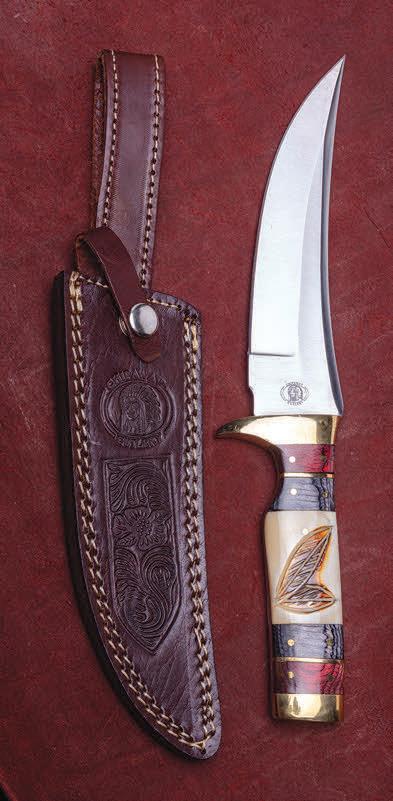



Flyboy Optics® Sunglasses a $99value
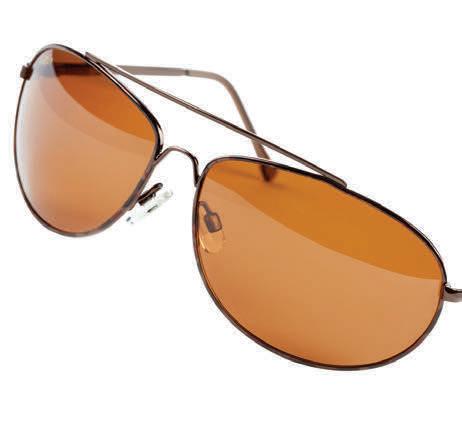

What Stauer Clients Are Saying About Our Knives
“This knife is beautiful!” — J., La Crescent, MN
“The feel of this knife is unbelievable...this is an incredibly fine instrument.”
— H., Arvada, CO


please call
Proposition 65 regulations before


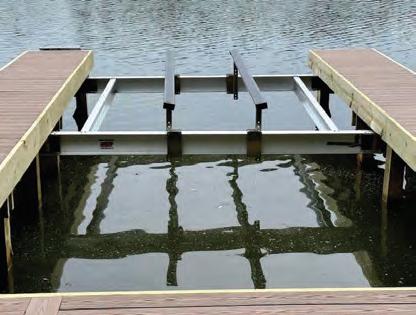
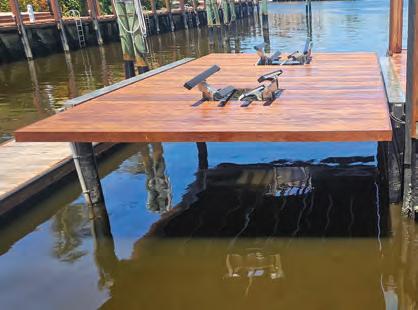
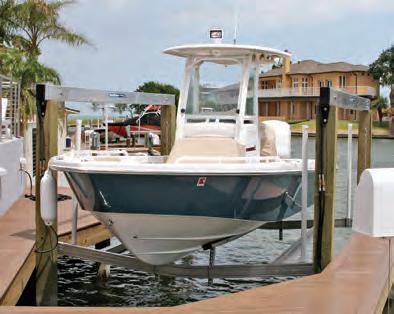

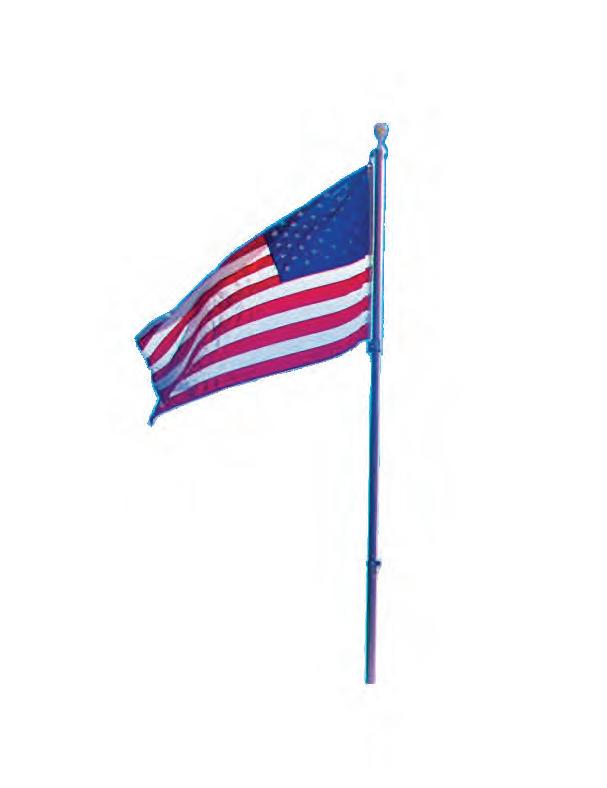
ShoreStation hydraulic boat lifts are a reliable choice for coastal residents and boating enthusiasts alike. Their strong construction, made with corrosion-resistant materials, allows them to withstand harsh environmental conditions, including sun, storms, and saltwater damage. ShoreStation provides a steadfast solution for protecting waterfront investments, o ering peace of mind to owners in the Sunshine State.
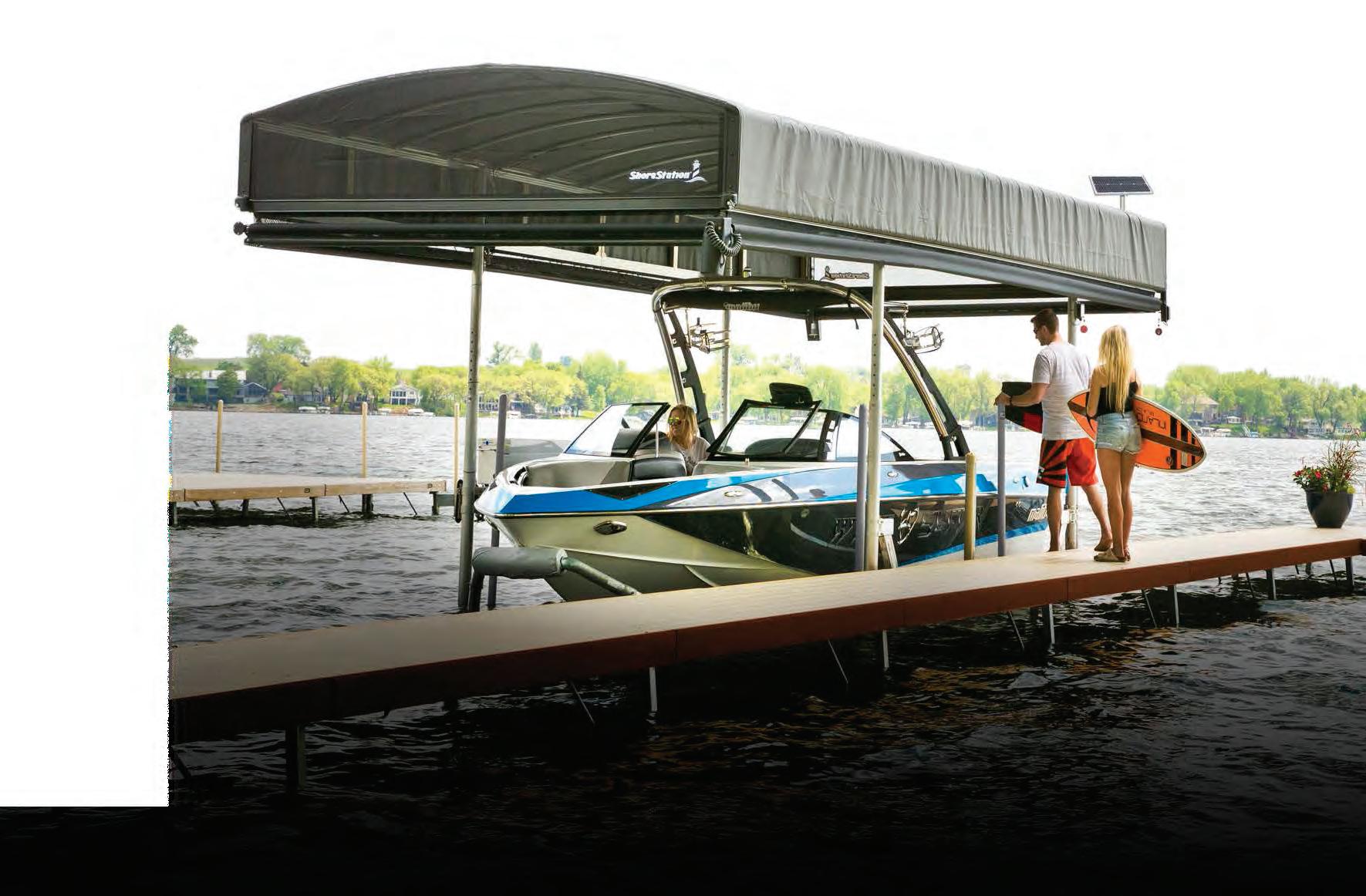
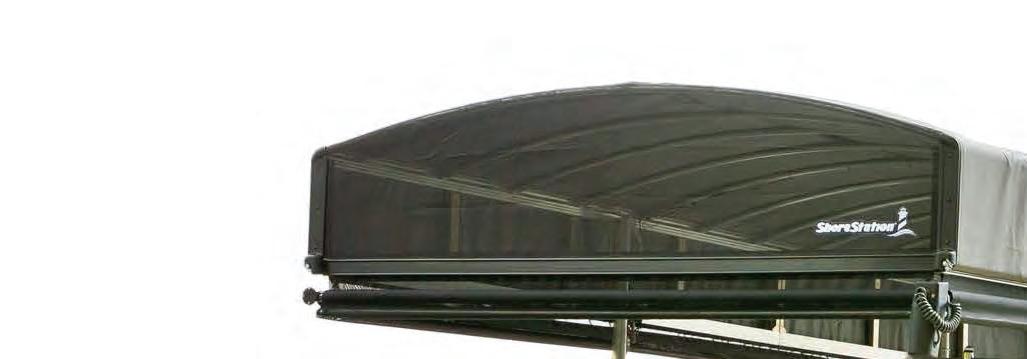
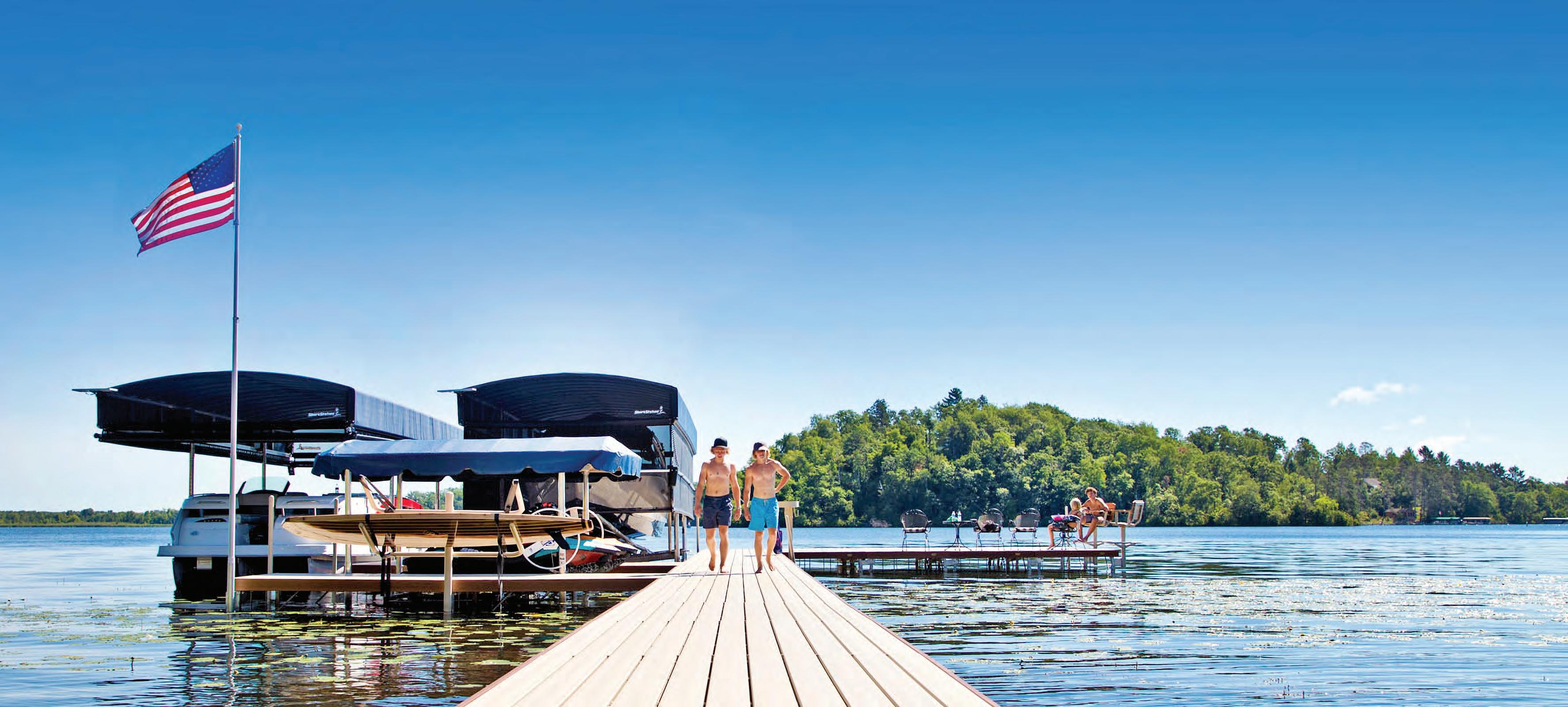



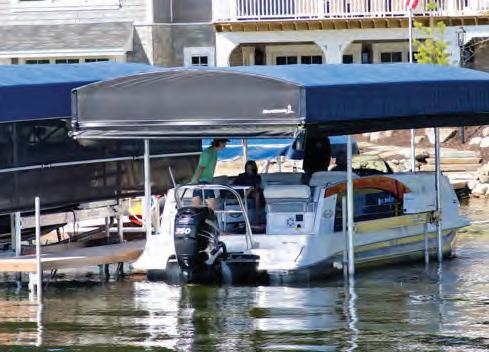
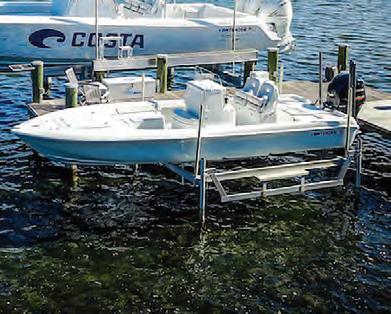
Equipped with exceptional weather resistant fabric and breathable SunTex 80 woven mesh ends for maximum protection and durability,

Made from the highest quality materials, our innovative hydraulic boat lift is one of the fastest and safest lifts on the market today. When you have a hydraulic lift, there’s no need to worry about wind and waves getting in your way. This lift will give you con dence to safely land and secure your boat in less-than-ideal conditions.
Never miss another moment on the water. Power your lift with clean, free solar power. Our speedy 20 watt charger features solar regulator drainage protection, saving your battery from permanent damage caused by overcharging.



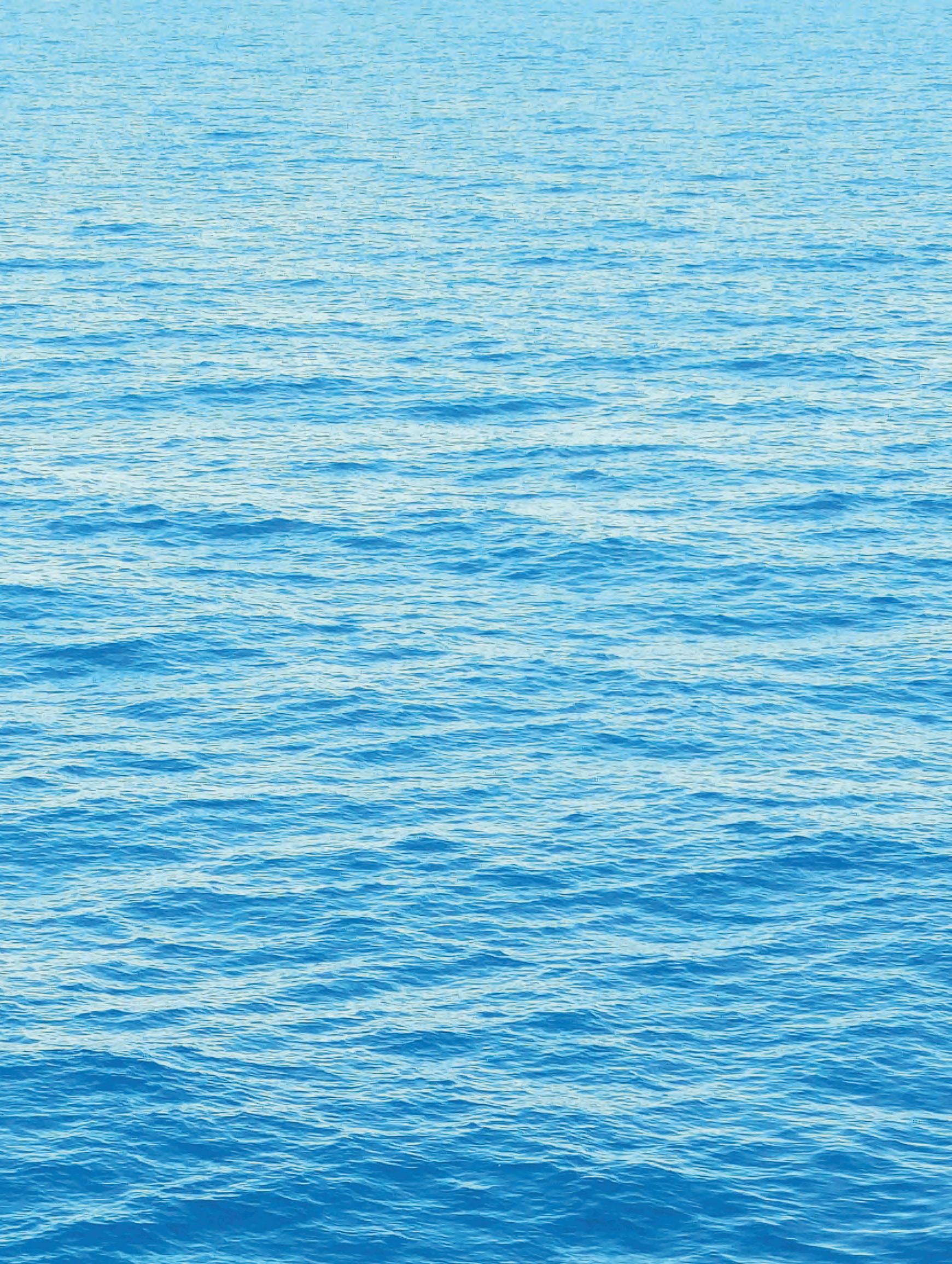


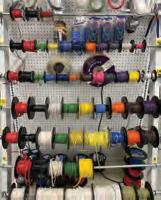

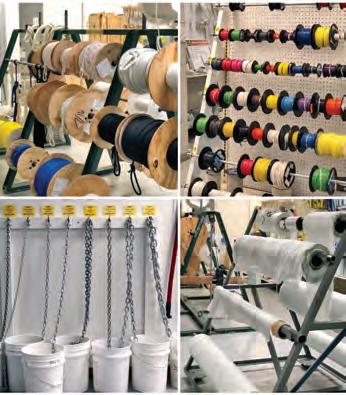
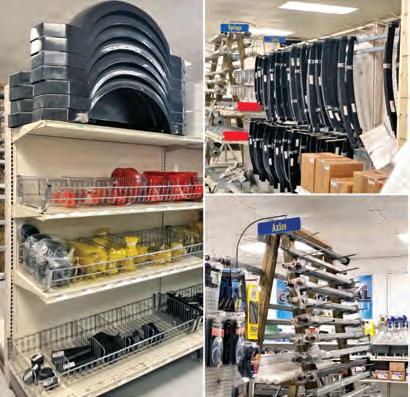




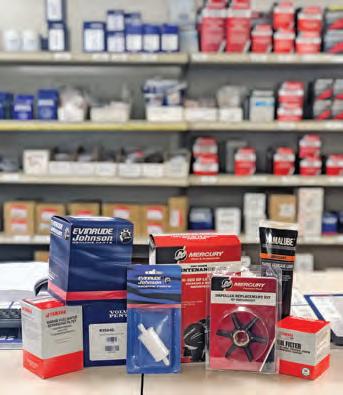
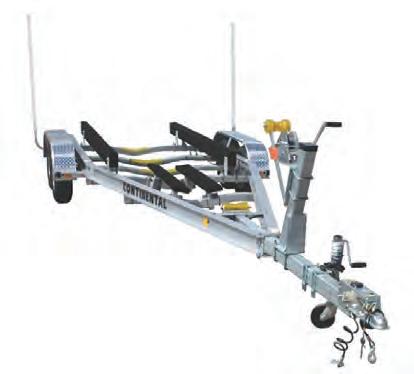
















Tim Barefoot
I’ve written quite a few articles on the tactics I used to catch grouper on the edge and inside the edge with bait in a decoy jig in the past, but now is a good time to push out a little further to see what’s up in the 350 to 500+ foot depth range. !is type shing may require you to change gears on your thought process and/or tackle, but you may be pleasantly surprised with the results.
First o , you will want to use a spinning rod with backbone and a lighter braided line. I’m not going to suggest any tackle manufacturer for rod, reel or line, but the line in the jig is the most important part of this equation. I know this sounds crazy, but you can get away with braid, a small is 20 pound test connected to a short 6-foot shot of uorocarbon leader, and catch the big boys from the deep. When you sh ledges, wrecks and rock homes, you have to use heavier tackle to coerse the grouper and big snapper out of the structure, but in the deep the sh tend to congregate around bait, and there is very little structure out there for them to get you in. !e bait out there consists primarily of squid—the universal bait for all the seven seas of this planet, period. Squid are present at all depths, from the surface at night to their migration back to the deep by day; just ask any sword sh. Ha!
!is deeper water shing may also require a change in electronics. In order to mark the sh and bait you need to have enough power to send the signal and

get a return. You can run all over creation trying to mark sh or bait in vast areas of water, but having the correct electronics will assist in this greatly. Once you start marking the blue-speckled screen on the bottom, you know you’re in squid. I’ve always said it, but when you nd the bait you found the sh. Once you mark the bait, more than likely, it will be squid and it’ll be time to drop in the correct jig.
I’ve made several videos using the 4 ounce (so plastic) Squid Jig, but I’ve also had a 6 oz. size made. A 10 inch mold cra ed squid, trimmed properly, can be very e ective at times. Fish like a champ on the 6 ounce headed down deep. !e jig stays perfectly horizontal and jumps like the 4 ounce, and everything down there sucks it up. I’ll be publishing videos soon on this.

I’ll close with this: nd the bait and you’ll nd the sh...using the correct electronics. Once you nd the bait/ sh, drop in the correct jig that imitates what they eat on a daily basis and you’ll get the bite. And one more very important note. Pay close attention to the MPAs, which are marine protected areas, and seasons you can sh in them. You need to be well informed of where you are when you nish shing and what you could put in the cooler. You have to play by the rules.
Check out Tim Barefoot’s YouTube channel and website, barefootcatsandtackle.com.
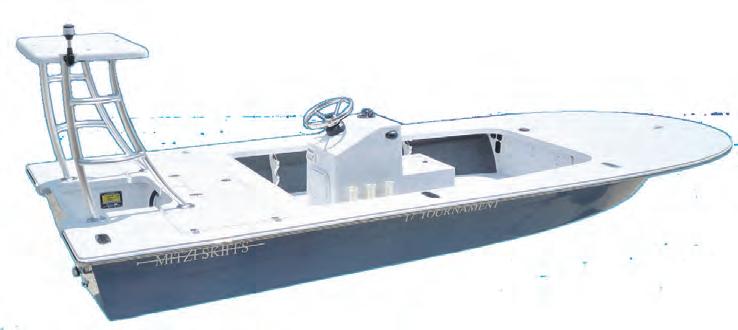

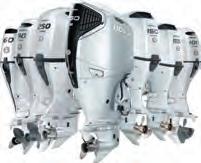
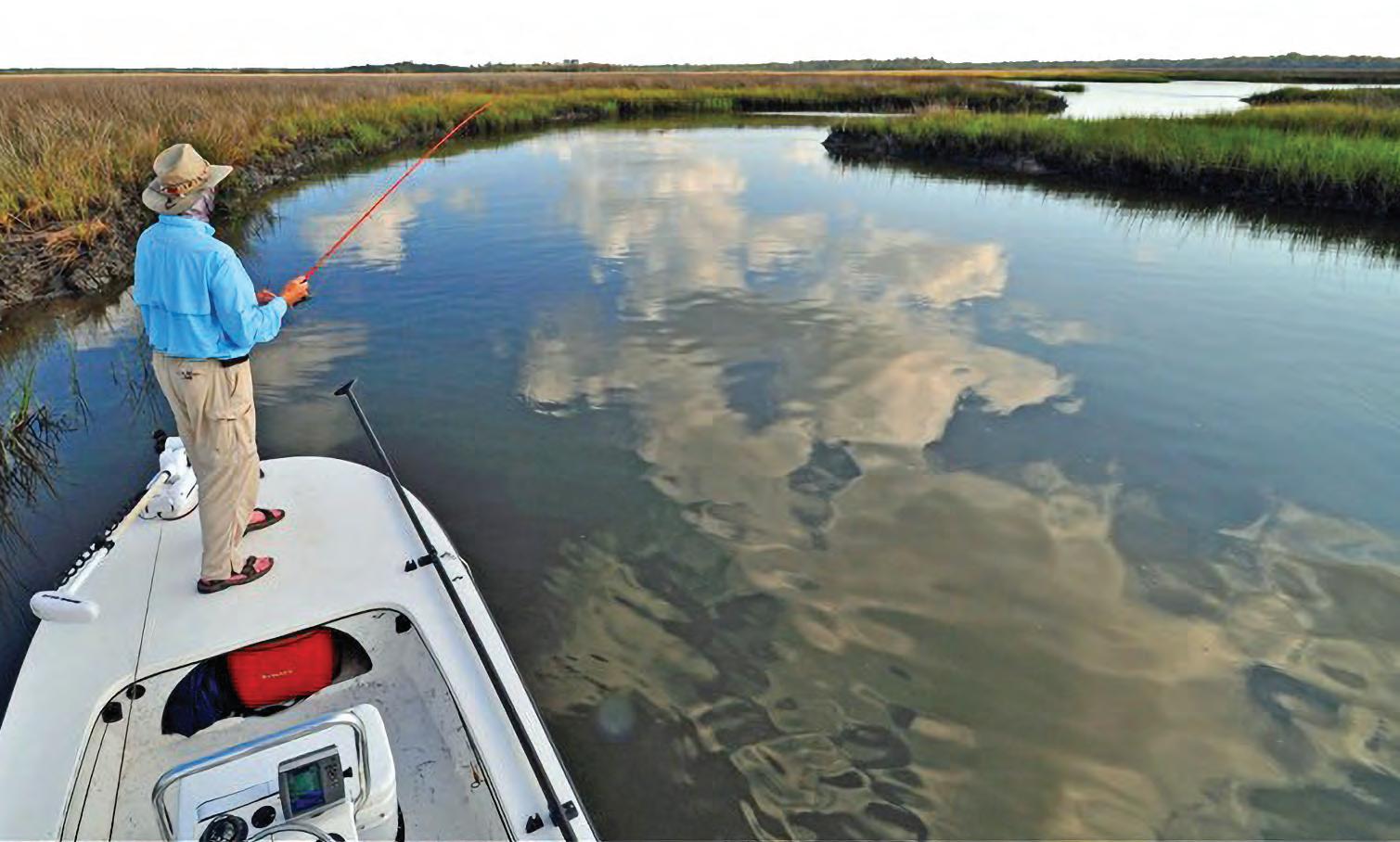
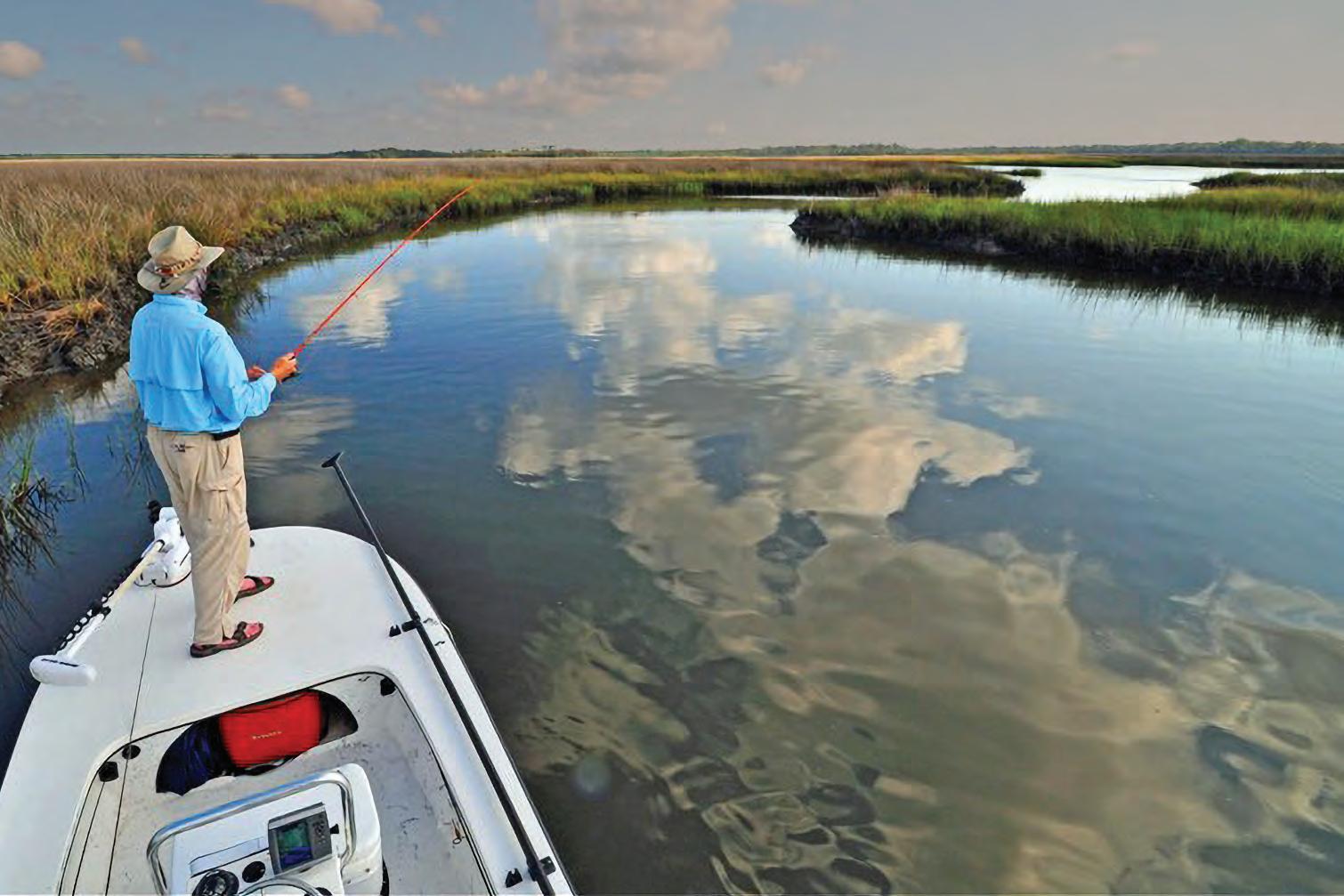
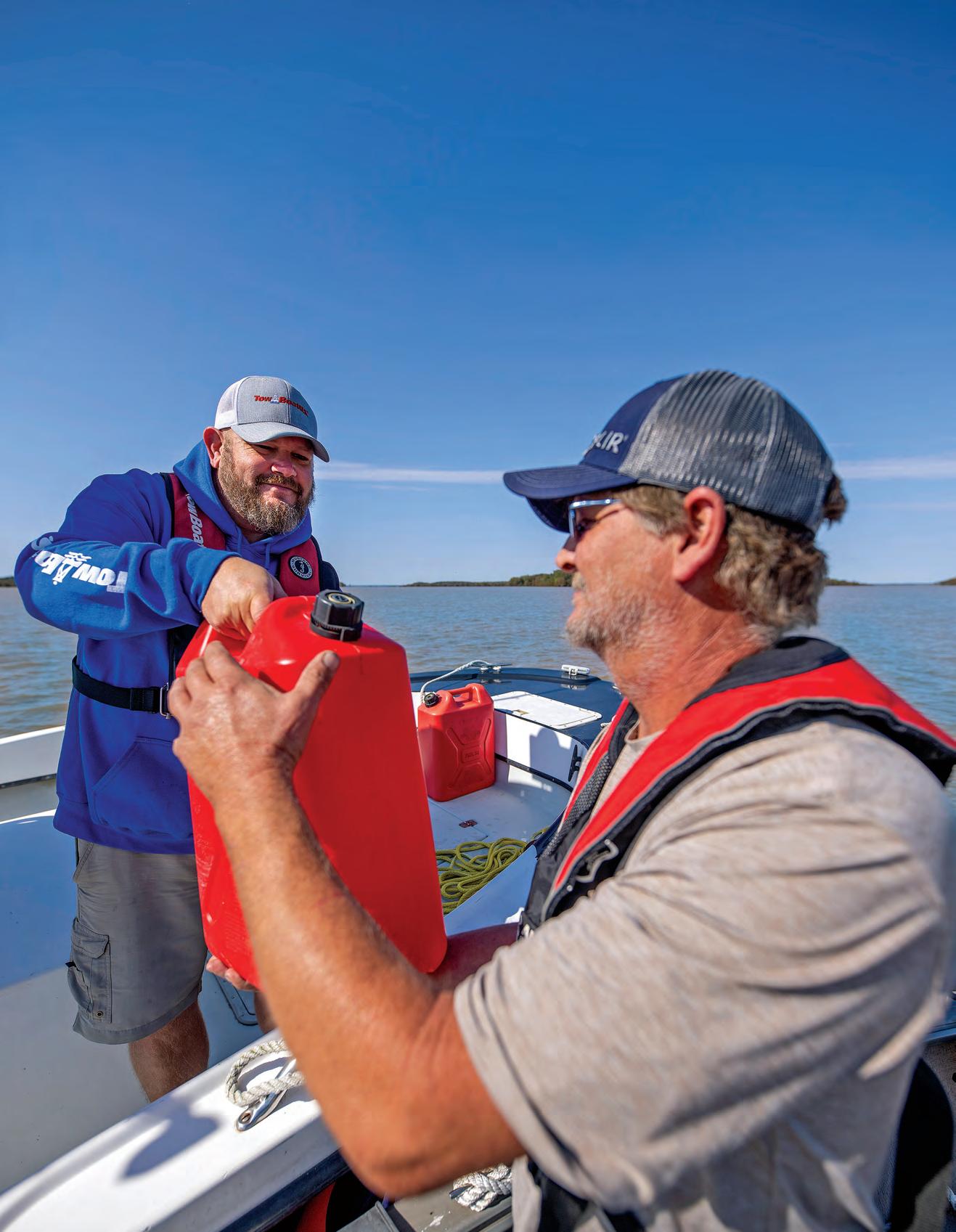



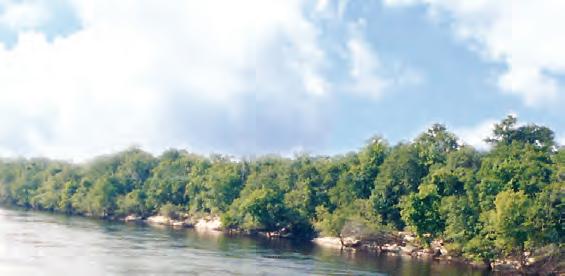
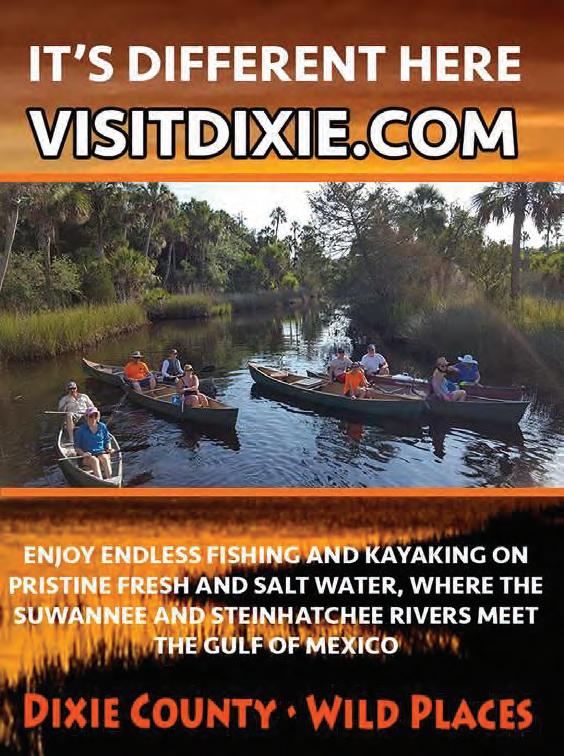


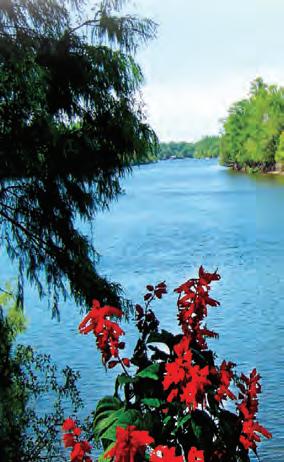
hile there are many ways to target bass, one method consistently stands out— shing with a big worm.
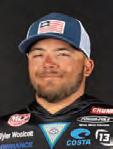
Worm shing may not be the ashiest technique, but it allows you to present your bait from a distance and work it slowly—ideal for tempting big, cautious females that ignore faster presentations.
One of my go-to techniques is casting a Texas-rigged stick bait. It’s a common tactic, but many anglers waste time casting at dead water. I focus on high-percentage areas, such as isolated patches of grass or lily pads. Even when the sh aren’t visible, they o en hold tight to this type of cover. Similar results can be achieved by targeting wood or rock. Make multiple slow retrieves through these areas for best results.
I prefer a larger 6” stick bait in dark colors like black and blue tip. For weights, 1/16 or 1/8 oz keeps the presentation subtle and natural. I recommend 17–20 lb uorocarbon, which o ers strength without sacri cing stealth—braid can be too intrusive here.
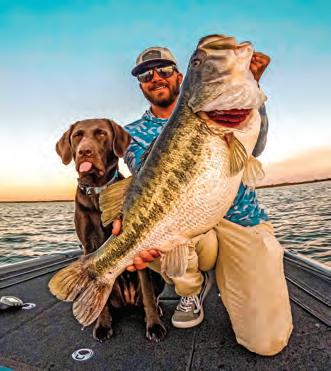
To cover more water and locate active sh, I switch to a big speed worm. While it’s a popular technique in Florida, where I predominantly sh, it works well across the country. !e bait’s vibration drives bass crazy, making it an excellent search tool. Once I nd sh with this method, I slow down and ne-tune my approach with other techniques. For stained water, I like darker colors like junebug; for clearer water, I use green pumpkin with ake. Weight ranges from 1/8 to 1/4 oz depending on depth and wind. Fluorocarbon in the 15–17 lb range is ideal here too.
Another e ective presentation is the wacky rig. It’s a more subtle approach and shines in pressured waters. Like with the Texas rig, I cast this bait weightless to isolated cover. I use lighter line and a spinning setup—typically 10–15 lb leader—adjusting based on cover density. In dirty water, I stick to dark colors; in clearer water, I go with more natural tones.
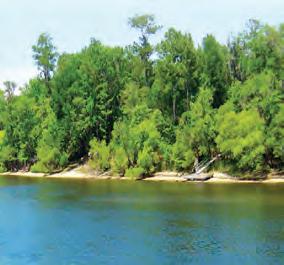

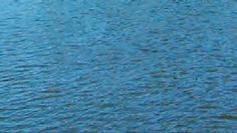

Flipping a worm is another technique I use, especially when there’s a lot of heavy cover. While not as stealthy, ipping allows you to place the bait precisely where other rigs can’t reach. I use large Senko-style baits, braided line, and heavier weights (3/8 to 3/4 oz) to penetrate thick vegetation. It’s perfect for pads, long banks, and heavy wood or grass. !e key is to sh slowly and thoroughly, putting your bait where others haven’t.
Rod and reel setups vary slightly depending on the technique. For most casting and ipping styles, I like a longer rod—around 7’6”— with medium-heavy to heavy action. !e 13 Fishing Omen Series has a few ideal models. I pair these with a high-speed baitcasting reel like the Concept A 7.5:1, which helps pull sh out of thick cover quickly.
For the wacky rig, I downsize to a 7’3” medium-heavy spinning rod. It o ers enough backbone to move sh but also provides the sensitivity and exibility needed when using lighter line. A spinning reel with a smooth drag is crucial. I recommend the 13 Fishing Axum, which o ers the control and power necessary for nesse shing around cover.
!ese worm shing techniques consistently produce. Whether you’re casting to isolated cover, ipping into thick vegetation, or working a speed worm through open water, there’s a big bass out there waiting to bite. I’m excited to put these methods to work—and hope they help you land some giants too.
Tyler Woolcott is a professional tournament angler and guide. Check out his website at www.tylerwoolcott shing.com.
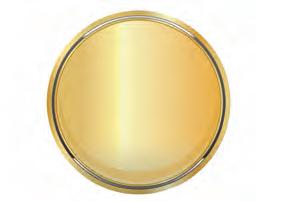

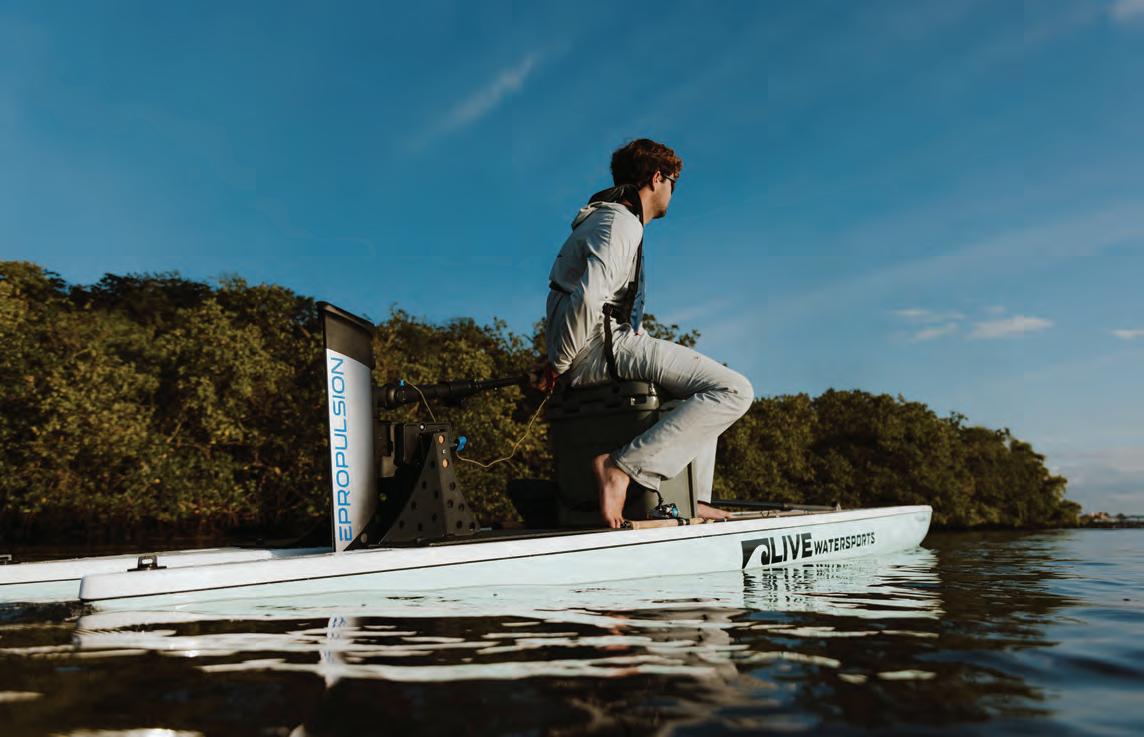





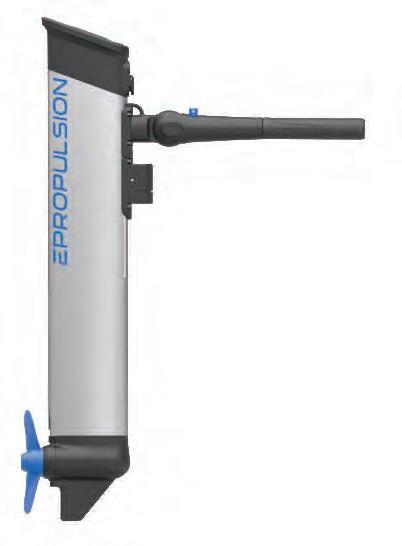
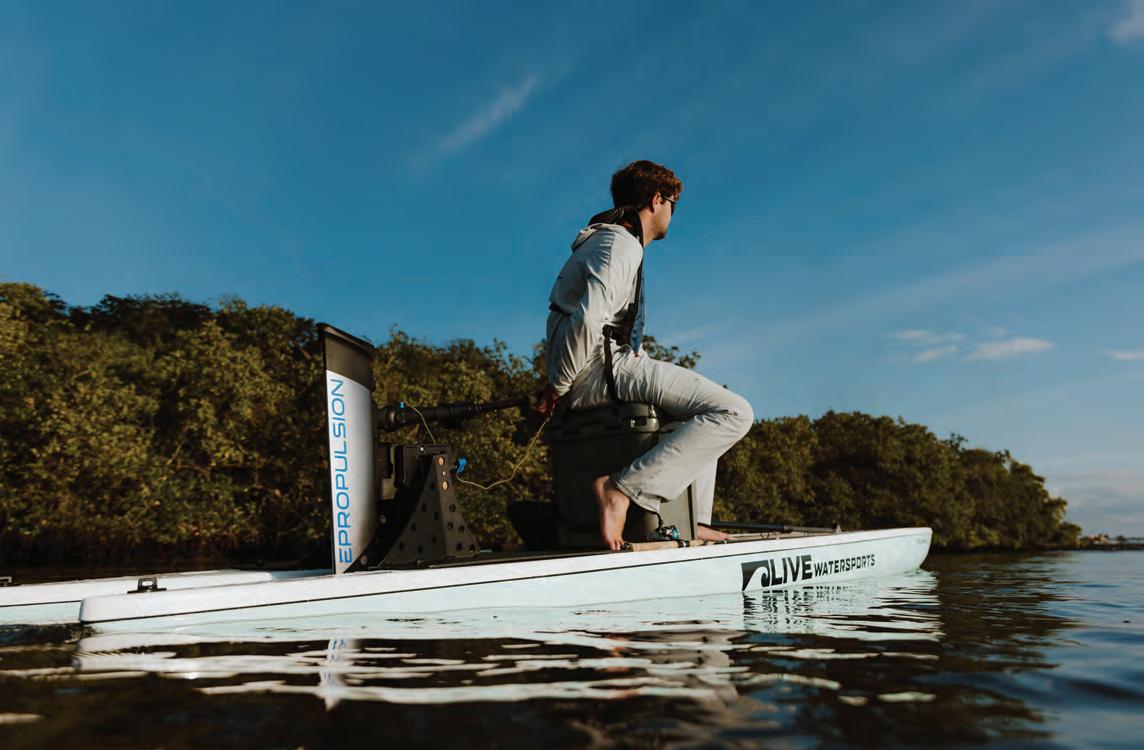




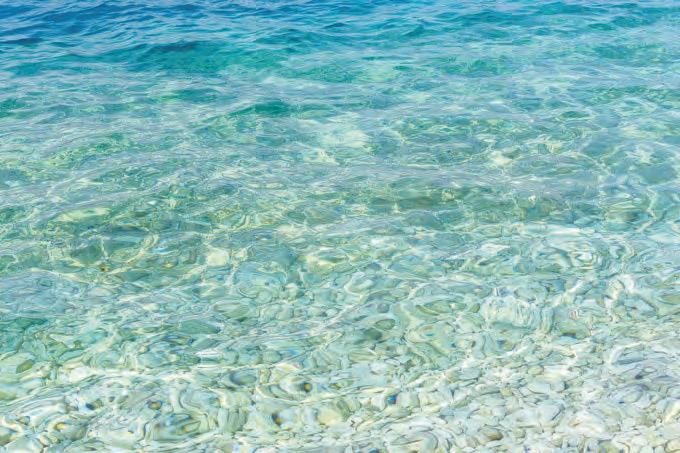




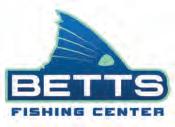

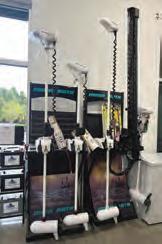
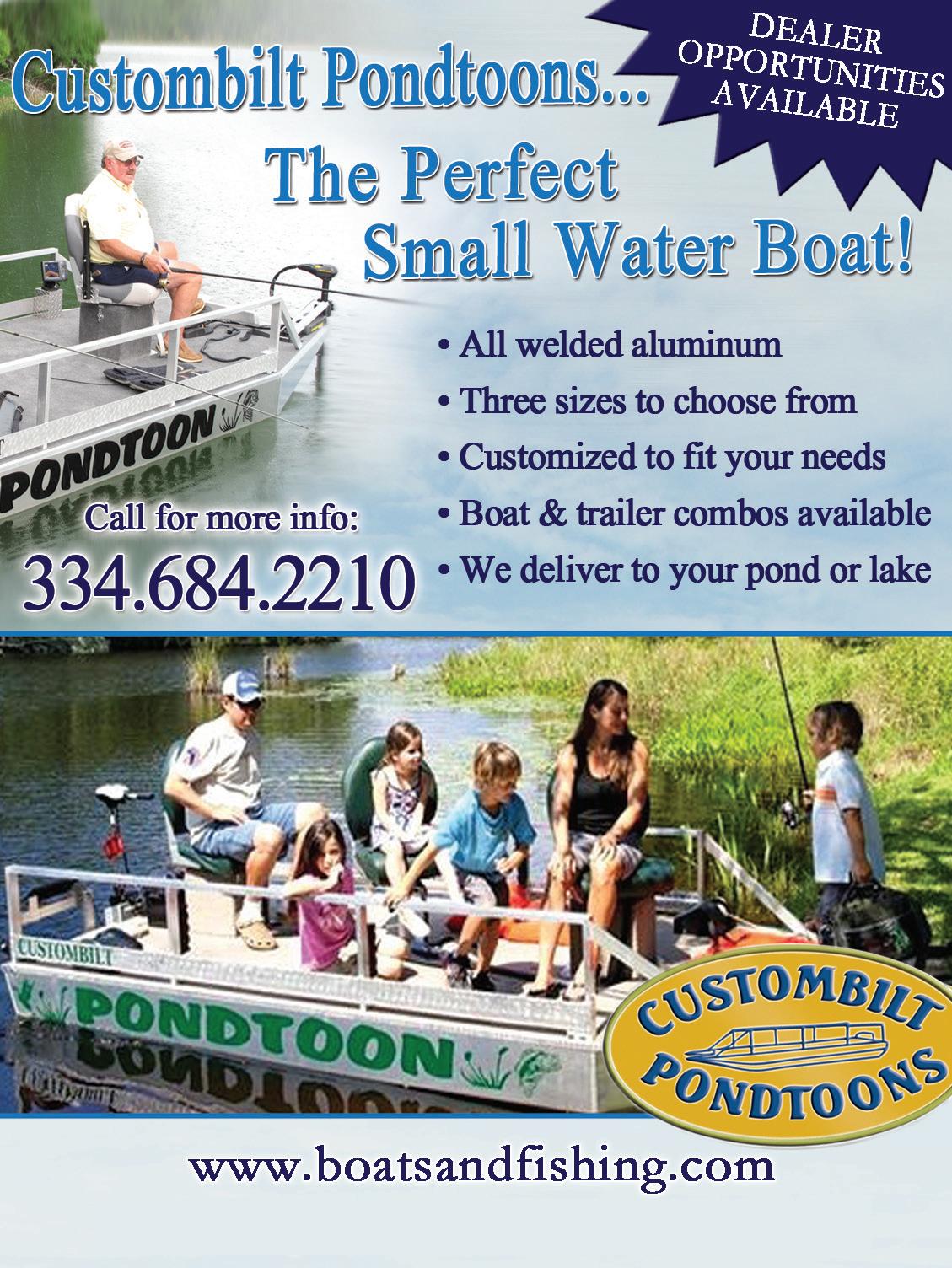

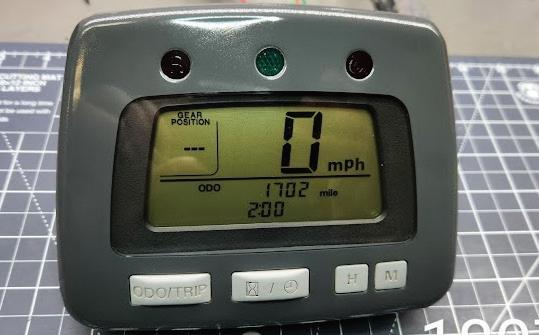
For the third time in less than a year, Georgia has a new freshwater !sh state record spotted sun!sh!
Josh Forsythe of Homerville, GA (Clinch County) landed the newest record catch of 0 lb, 13 oz on May 5 from the Suwannee River. is almost 9-inch catch beats the previous state record tie of 0 lb, 12 oz, according to the Georgia Department of Natural Resources’ Wildlife Resources Division (WRD).
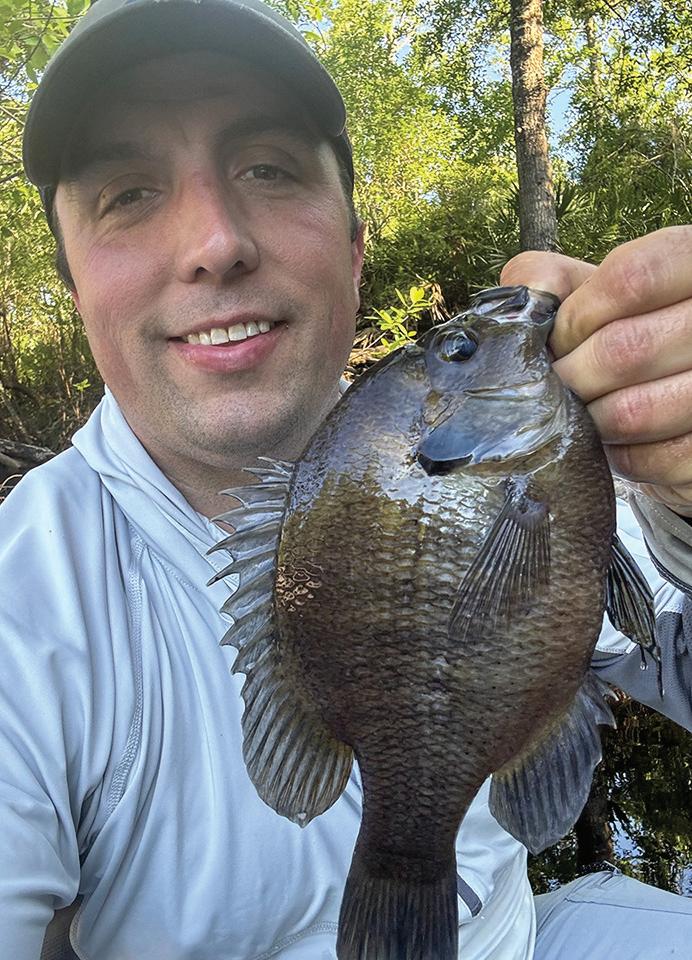
“My 5-year-old daughter and I were !shing for bream on one of my favorite rivers, the Suwannee, when I caught this spotted sun!sh,” said Forsythe. “I have been !shing this river for more than 15 years and it is one of my favorite places to !sh for good-sized bream, especially spotted sun!sh. I recommend waiting until river levels are below 4-foot and using top water bugs to catch giants, but a beetle spin or even a cricket or a worm on a cork will work.”
Spotted sun!sh are found in the Ocmulgee, Oconee, Altamaha, Ogeechee, Ochlockonee, Suwannee, St. Mary’s, Satilla and Savannah River basins. When angling for them, WRD recommends using worms, crickets, small spinners, ies and popping bugs.
“Maybe hearing about that state record tie for spotted sun!sh !red up some folks to land a new record – and we love to see it,” says Scott Robinson, WRD Chief of Fisheries. “Are you the next state record holder? Georgia has the best variety of angling opportunities across the state so Let’s Go Fish Georgia!”
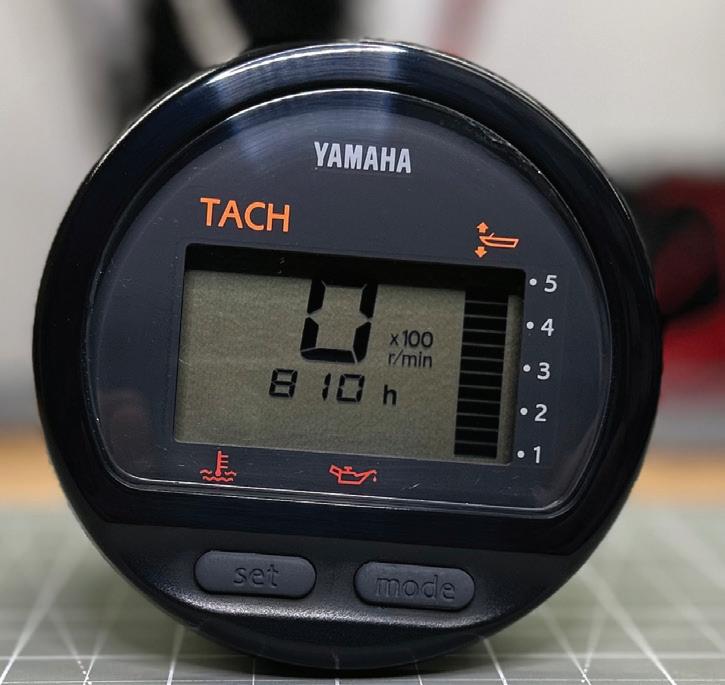
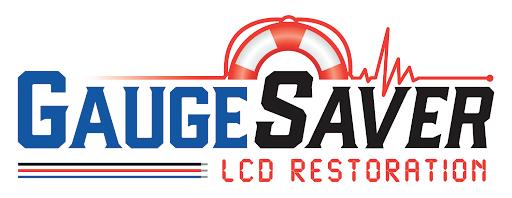
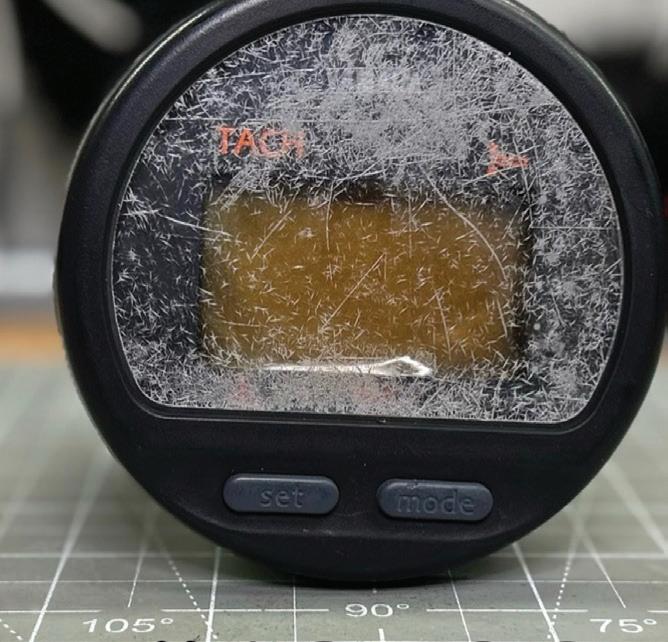



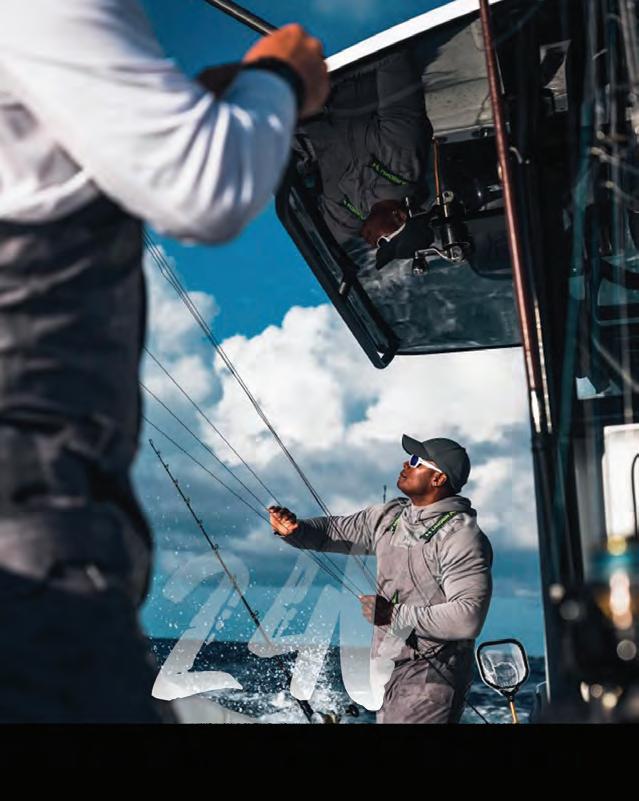



North Carolina‘s Department of Environmental Quality’s Division of Marine Fisheries recently established a new state record for Vermilion Snapper (Rhomboplites aurorubens).
Colby Shaw of Newport caught the 7-pound, 4-ounce sh o Morehead City on April 18, 2025. !e previous state record was 6-pounds, 9-ounces landed out of Ocean Isle in 2009.
Shaw was shing in his own vessel, o shore south of Beaufort Inlet when the sh struck his cut bait. Shaw made quick work of reeling in his state record sh, landing it using his Shimano rod and reel with 65-pound braid.
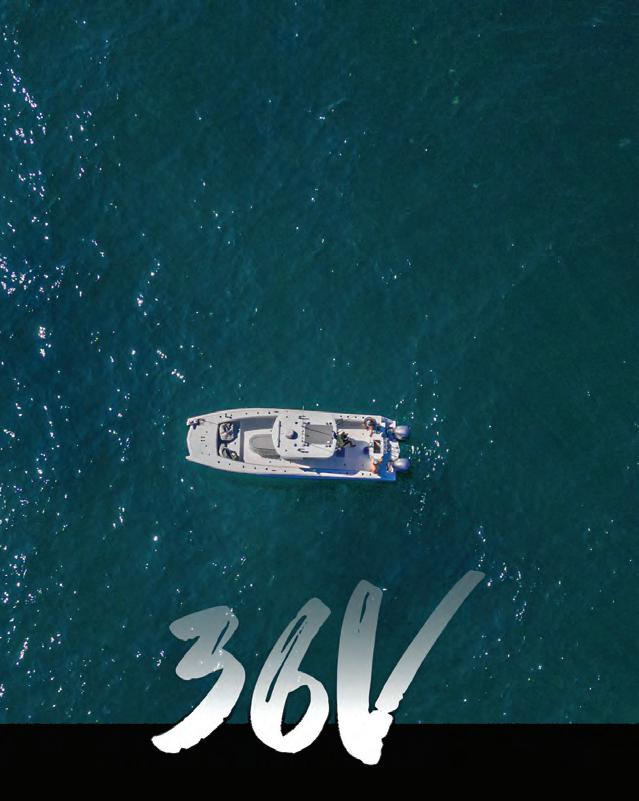



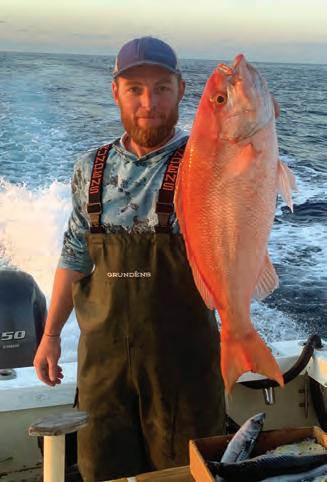
Shaw’s sh measured 23.5-inches fork
to the fork in the tail) and had a 17-inch
sheries sta at the Morehead City Headquarters
!e
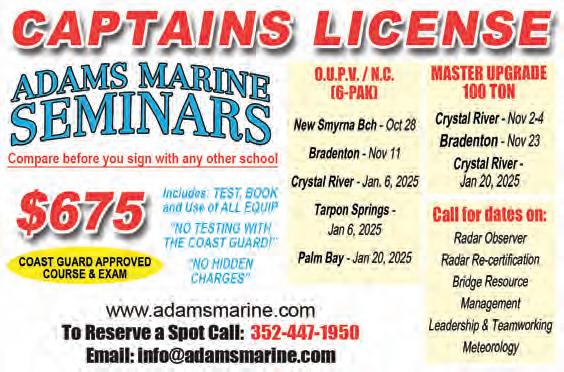


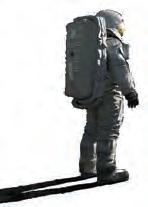
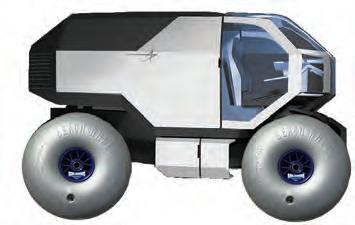

Division of Marine Fisheries.
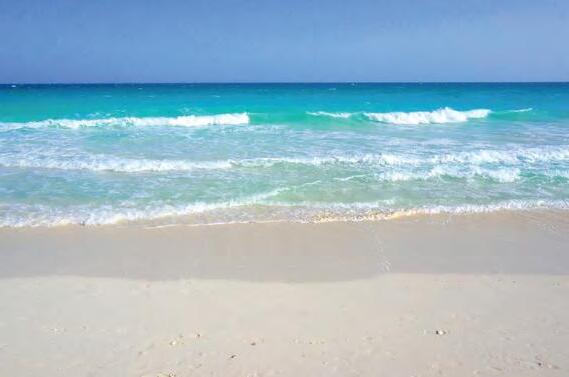








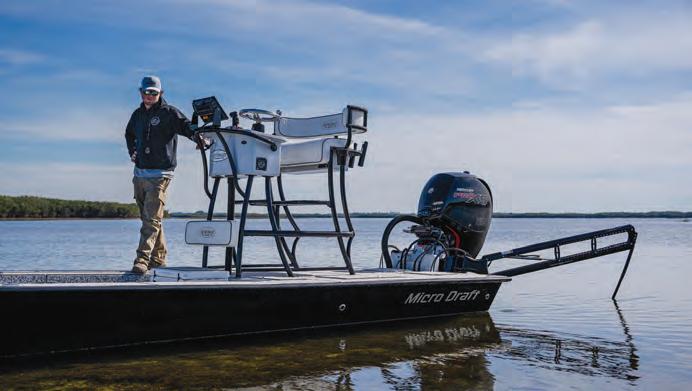




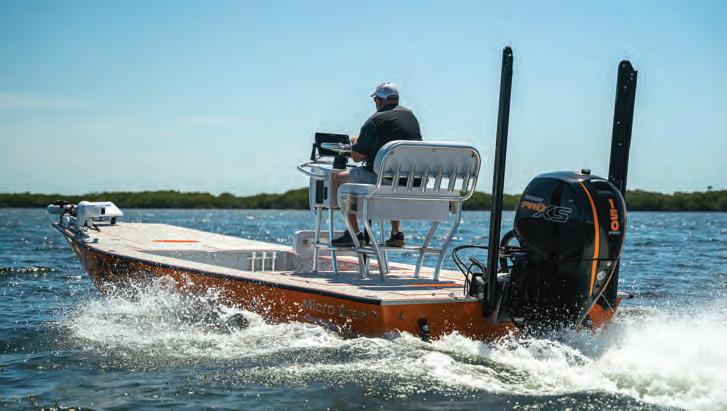

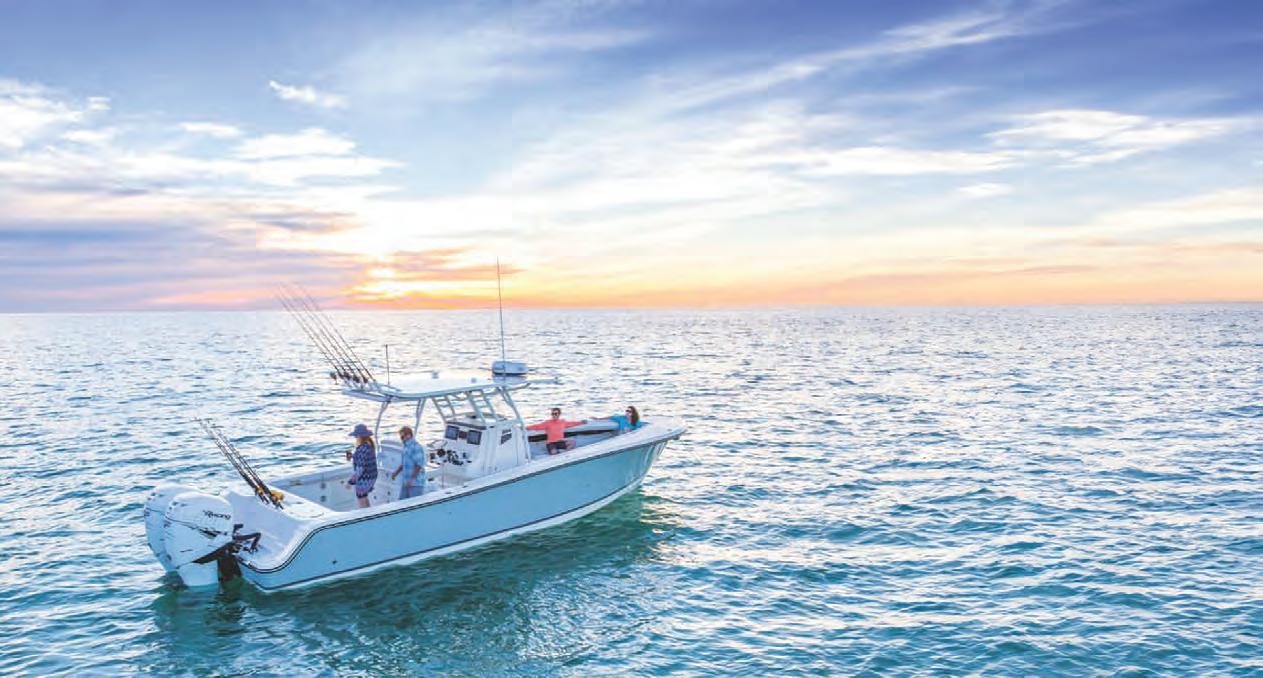


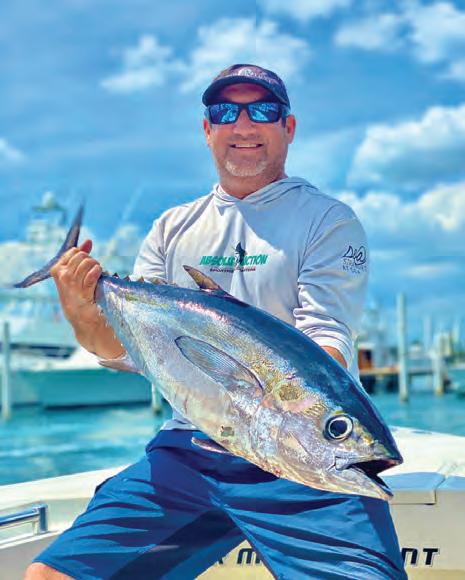





By David Haggard & Heather Lose
Representatives from Tennessee Wildlife Resources Agency, Tennessee Department of Tourist Development, and Tennessee State Parks celebrate the ribbon cutting of the Bill Dance Signature Lakes project at the Bassmaster Classic in Knoxville on March 25, along with the project’s namesake. Photo Courtesy of the Tennessee Department of Tourist Development:
